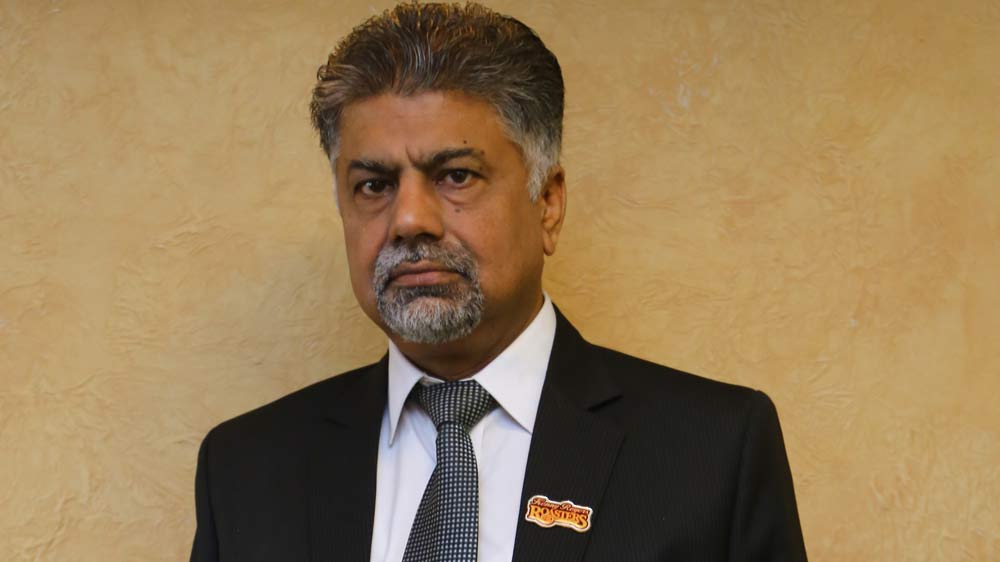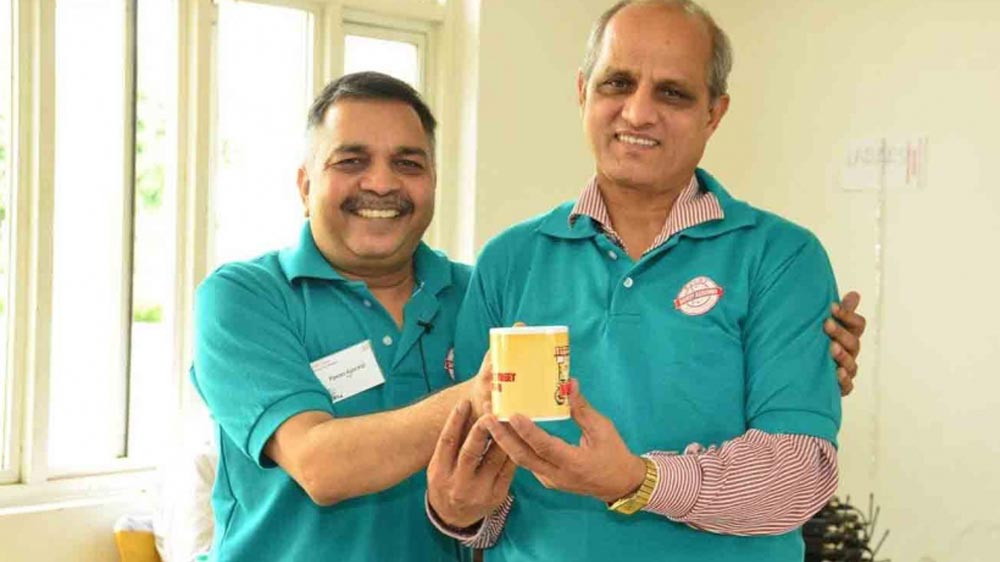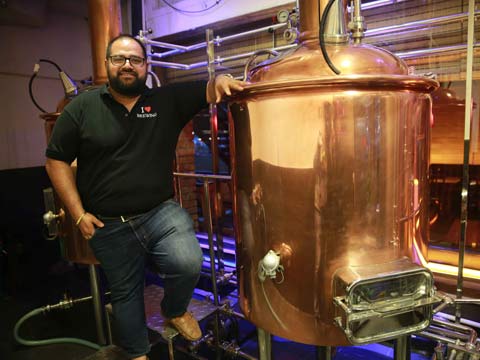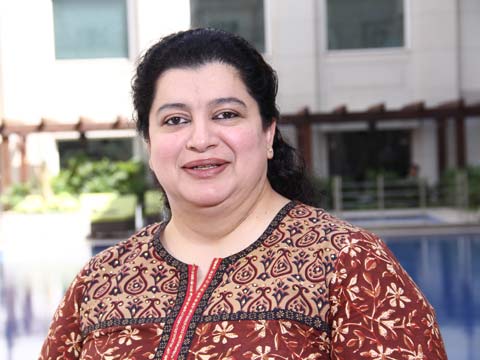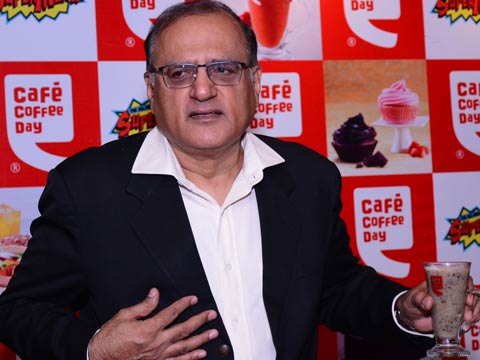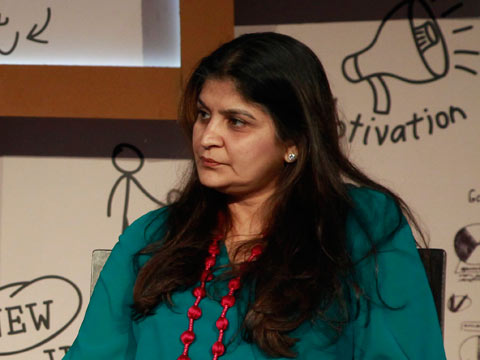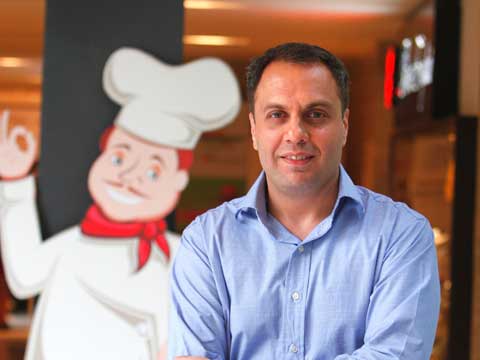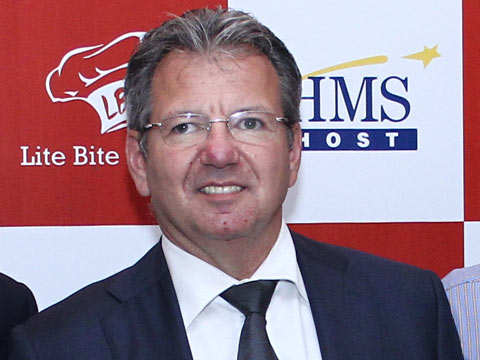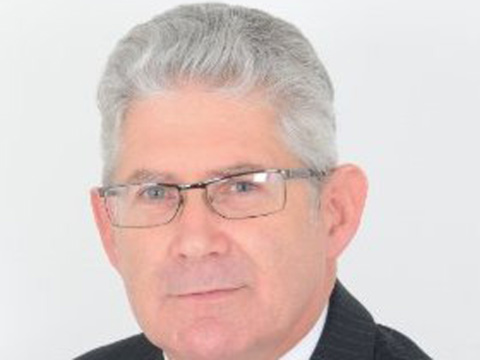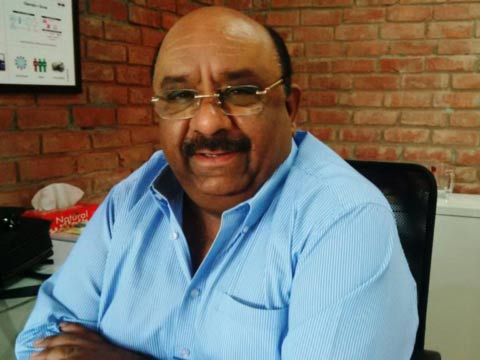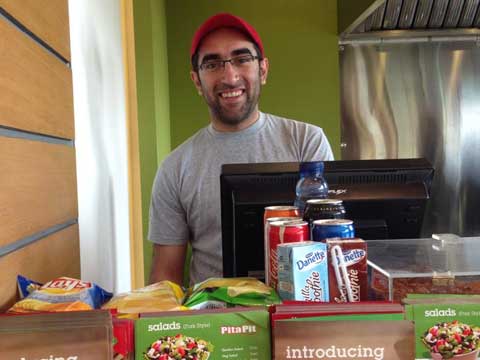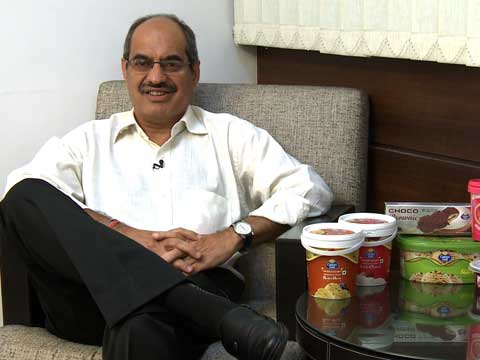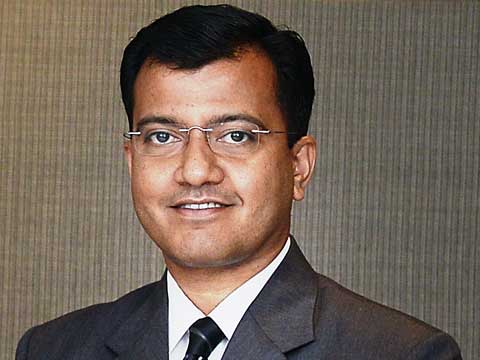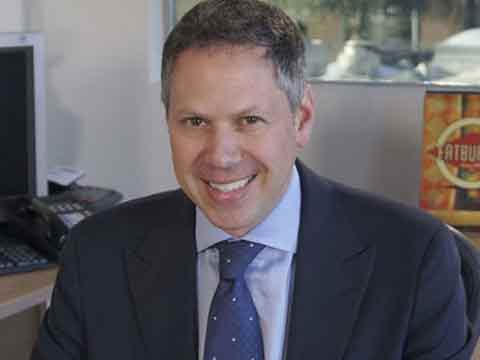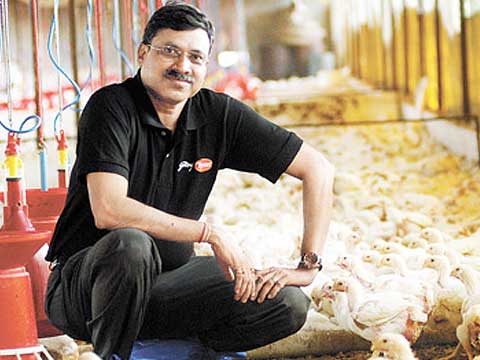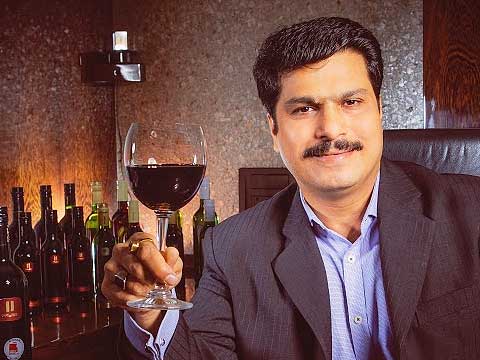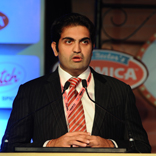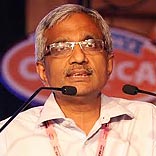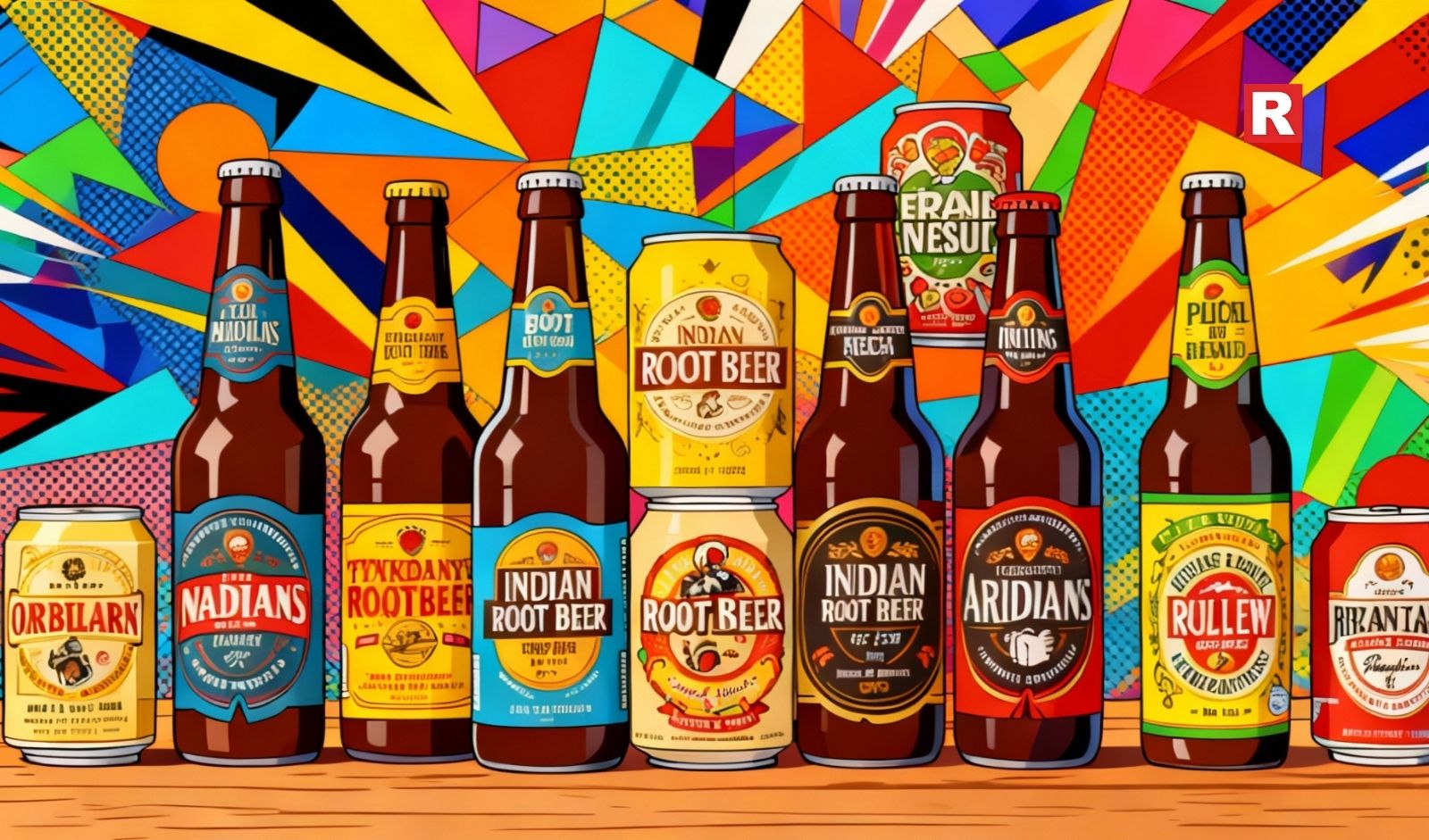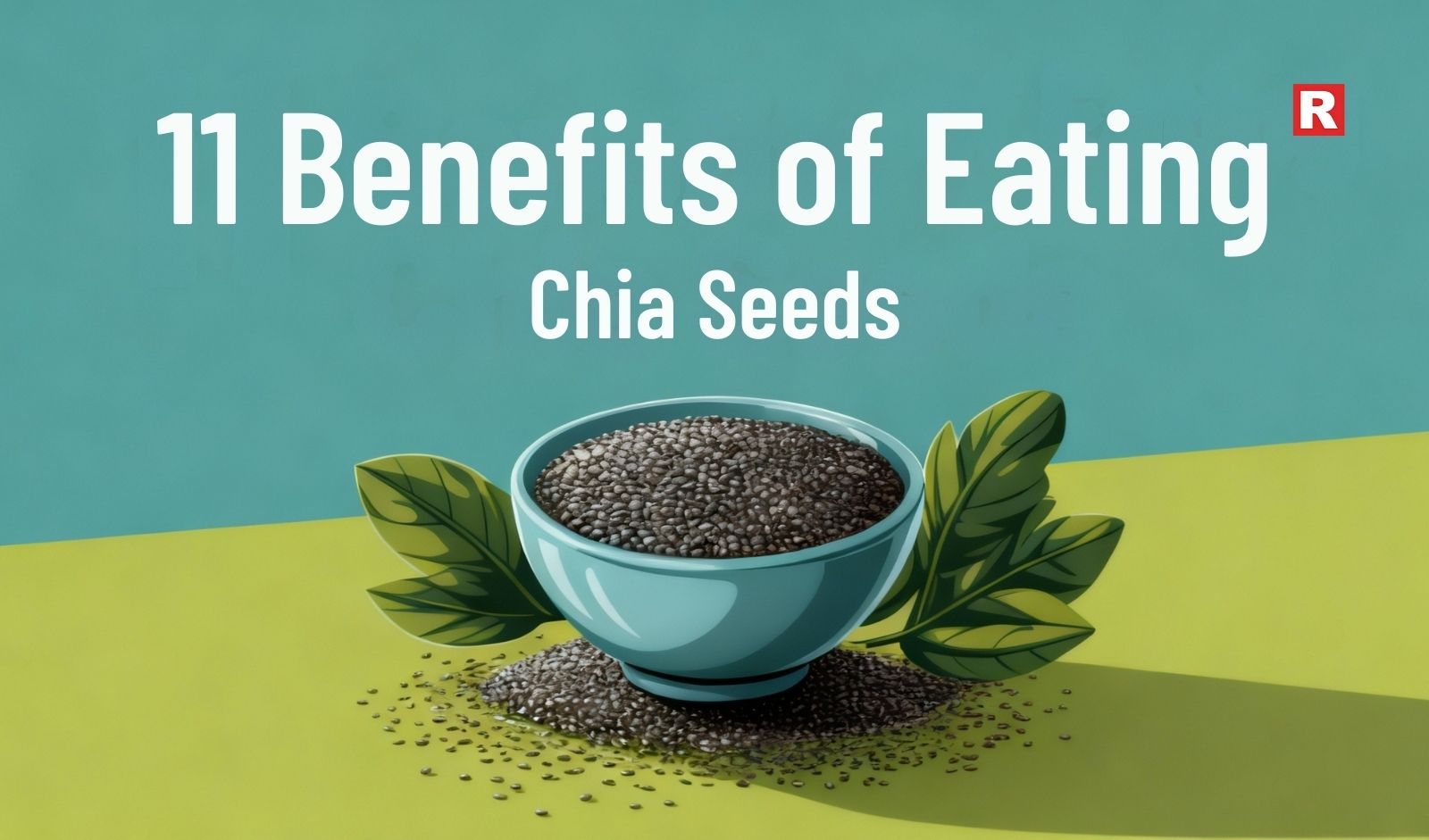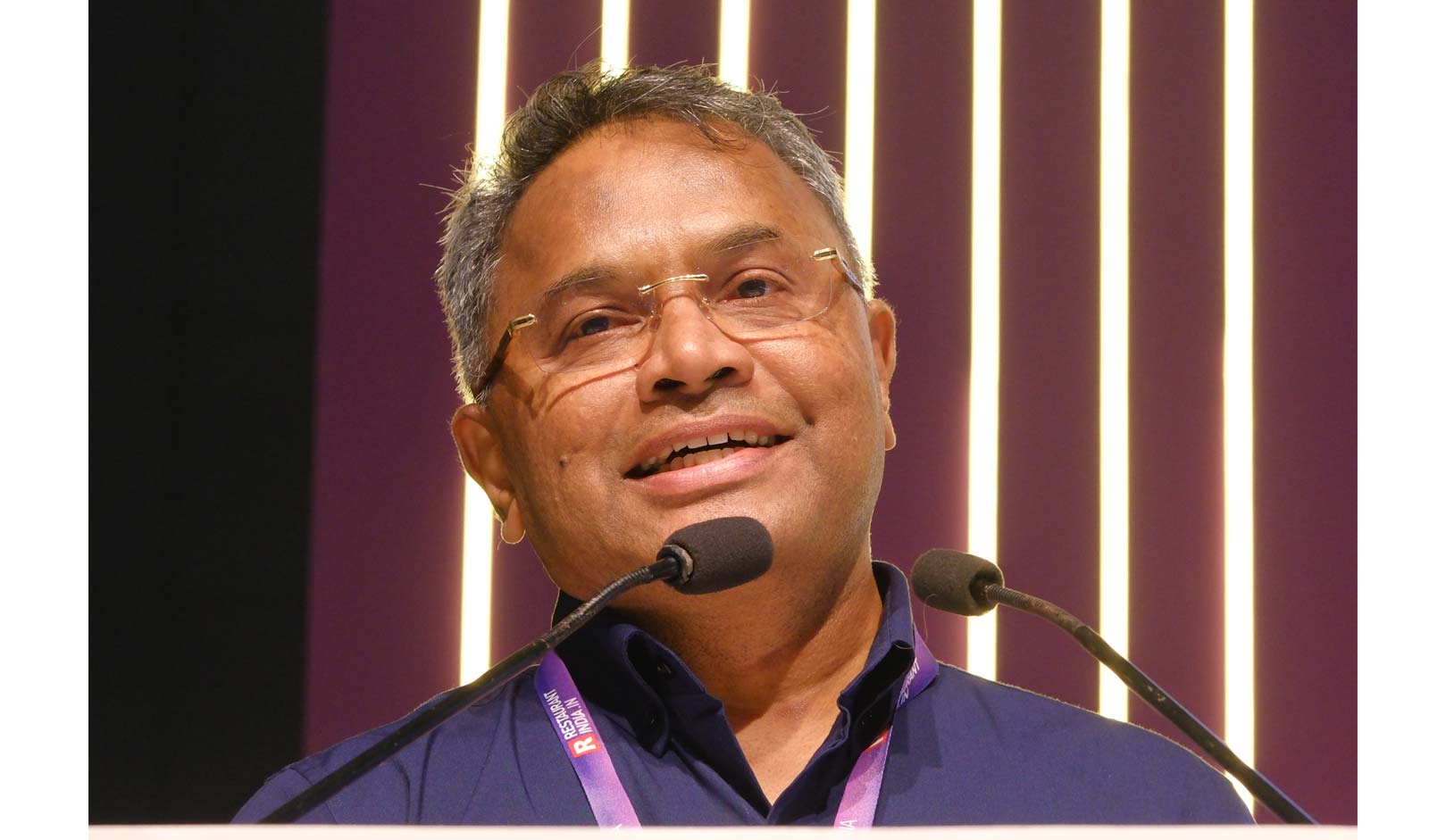
Kenny Rogers was started as an alternate to QSR. And, today it is running 400 outlets in about 14 countries and is expanding aggressively to different parts of the world. Recently, the casual dining chain entered India by opening their first restaurant at Garden Galleria Mall, Noida. KRR which is managed by Malaysia based Berjaya Times Square has joined hands with Troika Hospitality India LLP to expand in India.
Bringing brand to India
In food and beverages this is our first venture and my partners are based out of Malaysia and I am here looking after Indian operations. Kenny Rogers Roaster is Berjaya Times Square brand and they are also based out of Malaysia. And, since they know us from Malaysia itself they trust that we will do the proper justification with brand.
Partnership
Kenny Rogers Roasters was looking for a partner in India from last five to six years and were in talks with many of the people. They were looking for a partner who can work as per their requirement as this is the franchisor’s system and were looking for someone who was aggressive and has a knowledge of the Indian market well. And, ultimately they decided to go with us.
Entering franchising
It’s a partnership. We have got the master franchising rights for the brand in the country. They are having an experience of 400 outlets globally. We are only replicating their expertise here. So, that’s the way franchisee and franchisor works. We have got quality checks and two team members from Malaysia for two months and we also got eight members trained in Malaysia. In India we are planning to open minimum 10 plus outlets owned by Troika Hospitality and runned by Troika Hospitality and then we will be spreading with sub franchisee system. In that also we will manage the customer experience. It will be FOCO model because we don’t want to dilute the customer experience and change the KRR taste.
On Food
I don’t think there is any competition in the food we serve as it is entirely different to what is served till date in India. Nobody in India is serving rotisserie chicken and there is no brand having no flame kitchen. We are not adding any oil into food; our chicken is marinated and roasted in rotisserie which is made by KRR for all its outlets. The fat available in the chicken helps in getting it roasted and that’s way its tender and succulent because of the quality of the food we are serving.
We have got a huge menu- mock tails and soft drinks, soft drinks, muffins. For the first time in India we are serving muffins with dinner and lunch. We have got proprietary chicken items. We also built some items for Indian market like sauces named Ghost chilly etc. My menu is 70 per cent veg as all muffins, desserts, salads, wraps and drinks are vegetarian. 90 per cent items is original menu and we have added 10 per cent Indianised menu according to the market.
Supplying the right food
Proprietary foods are supplied by the franchisors. Other products are locally sourced and marinated in India.
On pricing
It’s a casual dining restaurant but we are very fairly priced. EPC along with a drink and quarter meal will cost around Rs 500-550.
Target Customer
Our target customers are everyone who is looking for healthy food. Everyone can boost that their food is delicious but nobody boosts that their food is healthy. Our tagline is deliciously healthy- our food is healthy along with delicious.
Expansion Plans
We are looking at opening 8-10 restaurants in coming years spreading all over India. We are planning at least three outlets by April. We have got massive pans and in India alone we will be opening 100 outlets in next 10 years. Our focus is Delhi-NCR for a couple of year’s expanding to Chandigarh and Ludhiana. We will focus on North India for next two years and then we will look for another market.

For all street food junkies who love lip-smacking roadside eateries but disgust them too for lack of hygiene, can now relish them fully without regretting over safety issues. India’s food safety regulator Food Safety and Standards Authority of India (FSSAI) has come down hard on street food vendors to sanitize road side snacks through multiple initiatives. Pawan Kumar Agarwal, the man in-charge of quality testing and CEO of FSSAI share the changes underway.
Tell us about your project ‘Clean Street Food’ and how will it help India tackle the hygiene issue?
Through this initiative of capacity building of food vendors we have found a model and we can do it across the country. This will benefit the poorest section of the society and also the citizen and consumers in many ways. As a country, we are not known for good hygiene and particularly there is concern about the basic hygiene. This initiative will help us in coming out of very crucial situation that is prevailing in the country. We are working with Ministry of Skill Development and other tourism and hospitality partners under Pradhanmantri Kaushal Yogna for capacity and skill building of the food vendors.
How does the recently launched FSSAI app empowers consumers?
FSSAI app is a free mobile application developed by FSSAI which would help consumers make informed food choices and bring to light the vendors who are operating without proper licenses and violating the safety norms. The app provides food safety tips, essential information about product and establishment and a hygiene rating for food product and outlet.
Would there be any acknowledgment for these vendors from the government?
Vendors would receive a government recognised certificate that would encourage them to continue upgrading their skills and knowledge through structured training to help them achieve a formal qualification.
Are food brands and restaurants also in the frame of quality testing?
We are working on a plan to bring all the restaurants in the food safety propaganda. We will partner with all food brands and restaurants in the country, train one member from each of them at FSSAI about the basic food safety and hygiene and they will be placed at these restaurants. Hence, it will become easier for both of us to make sure that the food served is meeting the basic hygiene tool and the person looking after it is trained by FSSAI.
How are you executing this initiative of providing safe street food?
We are planning to reach out to the smallest food vendors and see if they adopt the basic hygiene rule. In Phase I of the project, over two lakh street food vendors in identified areas would be taken up including all metropolitan and major cities, pilgrimage and tourist centres. There are 23,000 street food vendors in Delhi alone who are being trained, skilled and educated by our partners on hygiene factors. Based on the results, this would be rolled out in other places in the country. We are also planning to work out for Railways and Ports.

Ishan Grover is an expert in brewing and distilling from Heriot watt university Scotland. He started his career with Franchise of Lemp brewing company from St. Louis, USA in Gurgaon in 2011. At lemp Ishan introduced many unique beer flavours like chocolate beer and American pale ale, and became the first brewery to introduce the authentic lagers which were matured for 41 days. Today, he has set Gurgaon's biggest microbrewery chain “Manhattan Group" which currently have 5 microbreweries in Gurgaon and planning to open few more this year (Manhattan, The craft brewery, Open Tap, Uptown,Bronx). He has also crafted beer for top restaurants in India, including Quaff. Punjabi by nature and Lagom at Sohna Road.
What trend do you see in the industry when it comes to drinking culture?
Gurgaon is an IT hub and majority of people have travelled abroad or are expats. People already have an exposure to Craft beers from USA, Europe and Germany. Ever since microbreweries have opened up, people have stopped drinking the bottled beer and preference have changed towards fresh beer concept. Gurgaon is the only city in India to have 24 operational microbreweries and many more under construction. It is officially the Microbrewery capital of India. People appreciate fresh beer since it is very light on alcohol, even females really like to drink a lot of fresh wheat beer.
How are you promoting and creating awareness about brewing?
We conduct brewery walk through and brewing sessions at various breweries, we invite our guests to be a part of the brewing session so that they understand the complexity behind the art of brewing. It is one of the biggest challenges for me to educate people about various beer styles and brewing process, we also conduct one-on-one sessions on special requests.
Which according to you is the finest brewery in the area?
I strongly recommend Quaff at cyber which has opened just 2 months back, we have done innovations with some really unconventional beer styles like IPA (INDIA PALE ALE) Dunkelweizen ( DARK WHEAT BEER). Wheat, Premium lager and dark lager are very regular flavours found almost in all the breweries but Quaff had set new benchmark with its beers.
How do you see beer market growing in India?
Currently, Gurgaon alone is producing more then 2-2.5 Lakhs litres of Craft beer each month. At this moment only few state have allowed Microbrewery license, In 10 years when each state will allow the license for microbreweries, The craft beer revolution will be much bigger than what USA and Europe had seen.
What is your plan growing your own brand?
I am in touch with investors for a funding of Rs 150cr; we are introducing microbrewery chain in small cafe formats like CCD/ Starbucks all across India. Currently we are planning to open the format in Gurgaon and Chandigarh and then we are waiting for Delhi to give permission to microbreweries this year.
Tell us about expansion?
As a Master Brewer we are expanding our service to other cities as well, we have signed brewery in Pune which is going to be India's biggest Microbrewery which will produce 60,000 litres in a month. I am also doing 2 projects in Bangalore and 1 in Kolkata and Chandigarh.

With an indigenous approach to hospitality. He developed an appreciation for fine food because of his extensive exposure to some of the best restaurants in London and New York while working there in private banking and equity trading for a span of nine years. He partnered with Riyaaz Amlani, six years ago and came onboard with Impresario and is extensively involved in every aspects of the brands growth. Recently, Sid, together with Atul Sikand, creator and curator of Facebook’s busiest Indian recipe-sharing group, Sikandalous Cuisine; Tanveer Kwatra, Executive Chef, Le Meridien Gurgaon; and acclaimed restaurant critic and food blogger, Sourish Bhattacharyya has brought to Delhi’s customers’ ‘Asian Hawkers Market’, a three day feast for Asian Cuisine.
As you are the men behind bringing Social to Delhi. How does the response look like?
We had now nine social in total, three in Delhi, two in Bengaluru, and four in Mumbai. We are also planning to open two more Social in Delhi-NCR, one each at Epicuria Mall, Nehru Place and other at CyberHub, Gurgaon.
How does you finalise the locations for your outlets?
We have very strong team on board. My forte is food and Riyaaz forte is to find the best locations. We decide locations on looking at an area, what are people doing around that area and what’s the demand there.
How are you making each of your outlets different from other?
You go to a restaurant which is close to you. Some people go there to drink and some to work. The very important part of social is the workspace and it catches people who are close to that space. We also tweak the decor and design of each of the outlet. So, the CP outlet has a school theme to it. The trophies, the balls, the uniform everything makes it like a school. Also, we try to add some menu changes so that when you are working you try something different. Disco fry dish, clipboard menu. Patties and menu inspired from location of CP is the new addition. What according to you is the major change in F&B industry?
I think people are looking at more cuisine options. Earlier, they were stuck between Indian and Chinese. But, today there is lot more awareness about what people are doing around. Variety and value are two major points now that people are going to start with a restaurant.
What made you come up with another edition in just three months?
We did the first one in October and got phenomenal response. The response was great in terms of getting the catchment and getting restaurants on board. We had great footfall because we were trying to do which was never happened in the market, either bringing restaurants which people were not familiar of, or we have asked restaurants to do something which is typically not in their menu. Giving the customer an experience which never lasts, I think that caught all and we are here. Select CityWalk are actually were keen and we have signed a three years of deal with them to do many Asian Hawkers Market with them. We are planning at doing two in a year. One around October-November and one in February.
What are the criteria to bring restaurants on board?
It’s combination of couple of things- the restaurant should be pioneer of Asian cuisines in India. We also focus on balancing the cuisines- suppose we are having 30 Chinese restaurants and we see that there is underweight in a particular cuisine so we may reach out to a Thai restaurant and say you may fit here. It’s all about balancing the menu and offering it to the customers’.

How and when Twiss came into existence?
Twiss was launched in UK in 2011. It is a combination of two fruits or herbs Complementing each other and giving new twist to its delivery in taste and that’s why we call it as great Twiss. Mango itself is a great testing food, but by adding lime we just made it taste better. This is how the whole idea took place and we launched the brand. The brand is now widely accepted and doing reasonably well in UK.
Tell us about your brand and the flavors it offers?
In the sparkling fruit juice category we have launched four products namely mango with lime, passion with orange, lemon with mint and apple with blackcurrant in 250 ml can priced at Rs 40. The shelf life of our drink is 18 months.
We will not say we are organic. There is a small niche of consumers who are talking of organic, but the mass consumer still consumes the normal products. Our products contain Argentinean lime, it’s not very limy, but it’s a very smooth. We have got our established product range existing in UK. We have got a pipeline of more quirky flavors meeting Indianised requirement.
Who are your target customers?
We probably target 16 to 28 years old. Primarily students from colleges, universities who have certain amount of disposable income or pocket money, which they easily shell out. As per our research the acceptability for our flavor and taste among youth is high.
What inspired you to launch Twisss in India?
We think that the market is much bigger outside in terms of innovation, then we looked at India. We have done lots of research and found that in the sparkling drink category India has colas and flavored carbonates like Mirinda, Coke, Sprite, 7up among others, but the concept of sparkling fruit juice did not exist. There is only brand in the sparkling drink category that is Appy Fizz. This is the reason we thought that in India there is a good opportunity where no one is present and we felt we have something which is really good.
What about producing in India?
The question was where do we get it manufactured, eventually we decided to get it manufactured in India, so that we would have some cost advantages and it would be perfectly fitting with Make In India, Made In India and Made For India concept.
We source our fruits, which are quite global in nature. Mango is very much local product, but passion has grown in many places like Kerala and North-East region and we would like to explore the opportunity of getting it locally, which would save us on a lot of prospects. Around 70 percent of our products are domestically sourced and 30 percent are imported.
How healthy is the drink for diabetic prone Indian consumers?
It is a choice of consumer to drink or not. . Advice is, you drink everything in moderation and then you have your exercise ready to keep sugar in control. It’s refreshment drink.
Which are the cities you are primarily looking to target and what are your future expansion plans?
We are looking at cities like Mumbai, Pune, Bengaluru, Chennai, Hyderabad and Delhi.
We have identified about 50 towns; the metros, tier I, II and III. We would like to tap almost all A and B category of retailers. Also, we are exploring the opportunity to tying up with some of the QSR's and ethnic local food chains where they serve spicy and aromatic food, which needs this kind of sparkling drink to go along with.
Internationally we are looking to venture into Gulf and Middle-East region.
What about your online presence?
We are excited about the big proliferation of e-commerce in India, especially in online grocery. Coming summer we will be dealing with Groffers.com and Bigbasket.com.
Any plan of launching your own e-commerce portal?
No not as of now. We will launch the consumer engagement app, but not the commercial app availing purchase option as we only have soft drink. Consumer engagement app will be launched to gain ideas on how to engage with consumers from a marketing perspective.
How do you see the Indian beverage market three years from now?
The market will get more innovative with appeal by PM Modi to the soft drink players to add two percent of fruit juice. More players will get into the market and will grow the category. There will be place for everyone.
Beverage market has grown by almost 14 to 15 percent since last three to four years. I expect that the growth will continue with more players coming in.The market is around Rs 14000 cr to Rs 15000 cr in India.
What is the target revenue?
On an average we are targeting Rs 20 cr of turnover by the end of the year.

What is the training given to the EWD to bring them to work?
LTH believes that the brand should stand for more than ‘just profit’ and we are driving the brand to become truly Indian and trusted. In order for us to make these values a part of our DNA, we have focused our efforts on creating a socially inclusive work environment.
Our Employees With Disability (EWD) are often trained by the NGO/training company (through whom we source them) in soft skills and life skills and maybe hospitality skills too. These training modules can be anywhere from 1 to 3 months and in some cases 1 year. Once EWD join Lemon Tree Hotels, we then train them to do the tasks in their specific work areas, e.g. Housekeeping, Food & Beverage Service, etc.
What is the procedure of preparing them?
We believe that people with disabilities (which can be physical, social or economic disabilities leading to an opportunity deprivation) must be provided the same opportunities as others to realize their full potential and allow them to live with dignity. By creating a supportive environment in the organization that allows them to deliver their best, we are able to play a part, however small, in social inclusiveness, opportunity/livelihood creation and therefore nation building.
It is important to first brief and sensitizes the entire employee team at Lemon Tree and then welcome EWDs on board. This ensures they are made to feel comfortable and welcomed as part of the team. We have set up a ‘buddy’ system in the company where an existing employee is assigned as a buddy to the new EWD who helps him/her understand and learn his/her job and also helps with explaining processes and norms in the company.
What is the salary offered to them? Is it the same as others?
Yes, salary and benefits are the same as employees without disabilities and they work the same 9 hour shift.. Our policy of hiring EWD is a part of our business model and central to the way we work.
What are some of the morale boosting measures taken at the workplace for EWD??
The idea that we are welcoming them to be an important part of our company is the biggest morale boosting factor. This means they are being treated equally as others and with respect. Something which all persons with disability (PwD) consider very important for themselves.
As part of our regular HR processes, EWD also get a chance to have regular Engagement Chats with the Hotel General Manager, participate in all team activities, get the opportunity to win recognition and reward and are a central part of our monthly town halls. Even when the team does fun activities (inside or outside the hotel) they ensure the participation of all EWD.
How many employees are presently disabled at Lemon Tree?
We currently have ~400 EWDs in the employee base, who are Speech & Hearing Impaired (SHI), Orthopaedically Handicapped (OH) and Down syndrome or Autistic. They work across Housekeeping, Kitchen Stewarding, Food & Beverage Service and Finance/Stores. This is 13% of our total staffing at 27 hotels owned/operated across 16 cities in India.
How does their growth look like?
Our goal is to take this to 460-470 EWDs or ~15% by end March 2016. And then to 25% of the employee base by 2025.

Over the years CCD has grown as one of the preferred hangout joints for youth.. With approximately 1500 outlets in India, the cafe chain has recently raised its IPO.
As CCD has brought a menu revamping after ages what is your expectation from it?
We started this process of restructuring our food and beverages in 2011. And, as we have grown in almost 235 cities in India, it is very difficult for us to serve our customer in the same way. We have done a lot of restructuring at the backend to make sure we are consistent. We need to have a process control to make sure it happens. Being one of the leading F&B retail in the market we need to be very consistent about whatever we do. Hence, it did take us lot of time to bring out the powerful menu.
Do you think it’s an innovational step, looking at company’s growth?
This is one of the biggest initiatives we have taken so far.. If you look at the list of items included, it was not easy for us to ensure the standard operating process at the backend.
How much research went into launching this menu?
We do lots of consumer research on a regular basis with focus on youth. We focus on their inspirations and needs. We are also doing meetings in tier II cities to understand what people look for while eating out.
What were the two major picks in the menu that came from the customers’?
Two major things that were observed as a result were a) Youth demanded something international, trendy with bright colours and b) Something which meet their taste.
What changes did you observe depending on the regions?
Cities like Hyderabad and Chennai are not much transformed but the IT Hubs in such places are also changing. Every time we go for a research we find something different. When we were launching smokey chicken, the result was not good, consumer didn’t like it. That means Indian consumer don’t like the smokey products as they said it’s too strong. They want their meal to be more flavourful and simple.
Is the supermenu a new additionto the healthy food choice?
I will say it is a mix. I have a belief that when we go out we want to indulge. I think we as people have to balance ourselves, but as a brand one has to give some offerings which are healthy- no preservative, no cream, which reduces sugar level. We may launch salad next summer.
What percentage of cities is covered under the newly launched menu?
We have covered almost 80 per cent of all cities.

What is the training given to the disabled people to bring them to work?
Yum!’s mission is ‘Growth with a big heart’ which translates into our strong belief of giving back to the communities in which we work and live, making a positive difference in the lives of all stakeholders. One of the initiatives undertaken to bring alive this mission is to serve the community in a meaningful manner by providing employment to the specially-abled (hearing and speech impaired) which is imperative for their empowerment. This programme was launched in the country through our flagship brand – KFC. To achieve the desired goal of growth of such employees, we have worked a 360-degree approach which works right through hiring to the career progression – through training, enabling work environment, engaging with them and assisting their development for growth.
How is the response so far?
As a testimony to our achievements in this regard, KFC was awarded with the prestigious National Award for the Empowerment of Persons with Dissabilities-2014 by the Ministry of Social Justice and Empowerment, Department of Disability Affairs, Government of India. The award recognized our contribution as an employer of people with disabilities providing them the opportunity to harness their professional aspirations and potential.
How are they hired?
We work very closely with NGO’s like DEF Hyderabad & VRC Hyderabad, Silence Kolkata, Traain Mumbai in their respective cities to build up this noble cause. We use their expertise to recruit & sensitize our store teams. We also have an internal team that supervises and closely manages the entire program.
What is the procedure of getting them ready?
We have a detailed orientation program for our specially-abled employees. It incorporates the use of visual training aids and technology to induct them into the system. We also have an internal team that supervises and closely manages the entire program. Moreover, we have also partnered with different organizations in different cities, who train our managers and interpreters in specially-abled KFC outlets. In addition, we have instituted a special curriculum at our Yum! Academy and since its inception in November 2012, it has completed 2 batches and facilitated the training of 54 specially-abled youth.
What is the salary offered to them? Is it the same as others?
We believe in creating equal opportunities for all our employees. The pay-scale is therefore same for all. Through our initiatives we have instilled a sense of faith and belief in them, making them feel same as other employees.
What is the hiring process?
We have tied up with NGO’s like DEF Hyderabad & VRC Hyderabad, Silence Kolkata and Traain Mumbai in respective cities to build up this noble cause. We use their expertise to recruit & sensitize our store teams. We also use channels likeadvertising, pamphlets, word of mouth, database SMSing etc. to source employees. To induct them into the system, we work on a 360-degree approach which works right through hiring to the career progression. We train, engage, assist and enable a sound work environment for them to achieve desired goal of growth.
How many employees are presently disabled at KFC?
The Yum! Academy works in line with our commitment to ‘Growth with a Big Heart’ and since the inception of this program in November 2012, Yum! Academy has completed 12 batches and facilitated the training of 250 specially-abled youth. The Special KFC initiative provides employment to the deaf community and the Yum Academy provides skills to persons in the deaf community who are interested in seeking jobs in the retail hospitality sector. From having started this programme with one KFC store, it is now running successfully across 19 stores. We plan to open 1 specially-abled store for every 10 stores we have.
How does their growth look like?
Their growth looks extremely promising. Our recent achievement in this regard has been the six speech and hearing impaired Shift Managers who successfully cleared our internal process to rise through the ranks and very soon we will have our first specially-abled Restaurant General Manager soon. We have come across so many instances that accentuate the amount of affirmative change these specially-abled employees witnessed in their lives after their employment with KFC. We have witnessed an increased sense of pride not in just the specially-abled working at KFCs but also their family and peers. With this initiative, we want to give these specially-abled employees the same platform as anyone else who wants to grow in KFC’s fold.

K Hospitality Corp was founded over 40 years ago in Mumbai. Since its launch, Copper Chimney has been considered a pioneer in the Indian restaurant space, with a live open kitchen, one of the first in India, along with superlative tasty Indian food served in a high-end ambience.
Bombay Brasserie is a brand from the house of the ‘Legendary Copper Chimney’. The Brasserie, has been conceptualized and created to have a niche of its own and celebrate the Flavours of India. Years of research and development have resulted in a culinary journey that takes you from traditional royal kitchens, to the secret recipes from a mother’s kitchen.
Coming from the family of Copper Chimney. How was Bombay Brasserie born?
Bombay Brasserie was launched two years back in Coimbatore, which is a small city, as we wanted to test the brand in tier II cities. Being, a part of Copper chimney family, we have expertise in Indian Cuisine who have given a contemporary touch to the resaturant menu.
What quality makes Bombay Brasserie a part of Copper Chimney group?
Bombay Brasserie is a traditional Indian restaurant presented in a contemporary manner. It is a fresh new take on Indian cuisine. We have given a Bombay touch to the environment. We have some interesting food items which appeals to all generation. And the restaurant is a bigger spectrum of Indian cuisine. We have also focused on location by opening three outlets at the Bungalow. We also have Indian artwork to bring in the essence into the environment. Our presentation is unique, lighter.
What are the design elements incorporated in the outlets?
Bombay Brasserie is the culmination of that long and priceless process – a unique bouquet of flavours. All this is rendered in a smart and youthful, yet warm and simplistic style. The restaurants are contemporary with a touch of lovely white, fresh blue colours and some ancient features like old cupboards to give the ancient touch to it. So, the feel is very fresh.
How do you view franchising as a business model?
Franchising is a set system and procedure. So, we have fundamental systems, procedures which we train to the franchisee and also monitor them, hold them. We prefer owner operator, where they are present for day to day business and is also passionate about business.
What are the criteria that you look into a franchisee partner?
We want to expand with entrepreneurs who can run the business on their own. We are looking for single unit operator also. But, the person should have a passion and love for driving the bsuiness.
How many outlets you are operating today? And what is the expansion plan?
At present, we are operating in cities like, Coimbatore, Chennai and Kolkata. We are also planning to enter cities like Delhi, Gurgaon, Noida, Bengaluru and Kochi in the near future.
What is your view on the current food trend in India?
Indian food is there to stay. Other cuisines are also making a way into the Indian market, but I think Indian cuisine has to come forward in more smarter, lighter and fresh format.

What is the business format for operating a Subway franchisee outlet in India?
Subway is a privately held company and the world’s largest restaurant chain. All Subway restaurants are individually owned and operated by independent franchisees and there are no company-owned stores. The brand operates globally on a franchise-based business model. It offers great franchise opportunities to entrepreneurs who believe in the Subway brand and desire to be a part of its success story. The low start-up cost, simple operation and flexible floor plans make the chain appealing to potential franchisees. Besides traditional restaurant formats, Subway franchisees can also opt for non-traditional restaurant locations like airport terminals, hospitals and universities.
What are the supports Subway provide to its franchisees?
The company provides training and support to franchisees through its world headquarters in Milford, Connecticut, USA; five regional offices and various country offices across the globe. This facilitates seamless integration of franchisees into Subway family. Franchisees are supported by dedicated locally based Development Agents and their staff that provide additional business expertise.
What are the elements that one needs to keep in mind while choosing a Master franchisee and a Sub-franchisee?
All Subway restaurants are individually owned and operated by independent franchisees. We do not have Master franchisees in our system but many of our franchisees are multiple unit operators. The main consideration would be investment followed by management bandwidth to operate multiple outlets.
Facts about Subway franchise:
| Investment Required | Rs 45-66 Lakh
|
| Area | 250-2000 sq ft/restaurant
|
| Licensing Fee | Rs 6,00,000 |
How does one decide on locations? Is the franchisor or the franchisee responsible for taking such decisions?
Given Subway’s flexible floor plans almost any site could be utilized to open a Subway restaurant. If any entrepreneur is keen to become a Subway franchisee and has a property that could make for a great Subway restaurant location, he/she can submit their location to the development agent for review.
All real estate selections for Subway restaurants begin with a proposal to a local Development Agent submitted as described above. The initial draft of the lease for desired locations is sent to a representative of Subway Real Estate LLC. (SRE) SRE then negotiates provisions with the landlord and arrives at a lease that meets both the landlord’s and tenant’s needs. The final decision to open a Subway restaurant at a location is taken by the development agent.
What is the Revenue Sharing model between the two?
Subway has a royalty of eight per cent and marketing fund contribution of 4.5 per cent
What is the Growth Prospects and Future agenda for the segments in India? Who is your top selling franchisee?
It was in 2001 that Subway opened its first store in the Indian market. Today, Subway has 500 plus restaurants in more than 70 Indian cities and expects to add 100 more restaurants by the end of this year.

Barbeque Nation is one of the first restaurants to start the concept of Do It Yourself, backed by CX Partners which has a 25 per cent stake in the company, the restaurant chain today has minimum attrition rate of about 39 per cent as compared to the industry where it touches approximately 70-80per cent or more in a month. With a plan to open about 100 restaurants in next two years, Barbeque Nation has average strength of 4.7 customers per table. Here is the excerpt from the interview:
What’s keeping you busy these days?
We are busy doing our expansion. Our plan is to sit at 100 restaurants from two years from now which means we will be doubling the store count from now which is 52. From the industry perspective you can see that there are lots of food aggregators today in the metros and they are providing you the dining option at the comfort of your home or office.
Are you planning to go the online way as other restaurants are keen on sharing online space?
We have so far resisted the temptation to go that way because we think that the experience we give is very typical to having dining experience in restaurants. We want our customers to come, enjoy, and feel free at the long 130 minutes which we give. It is not only value for money that they realise but also value for their time that they are spending. It is going to be very difficult to replicate that experience that we give, unlimited stuff at limited price. And we are not very sure that this something we want to do and our customers will be content and delighted by this. So, once we arrive at some sort of conclusion about the right business model for us we might think about it.
What is your view on the current trend that is backed by the food aggregators?
Food aggregators’ have taken the market by storm, I myself is their customer. I order my food from Freshmenu where they deliver within 45 minutes which is a reasonable period of time. They have a fresh and new menu every day and they deliver fresh so I like the way these concept are growing and they will have bright future as their market is growing.
Why investors are tempted to invest in the casual dining format?
Casual dining has the brands which is for the masses rather than for classes which means that your break even or future growth is more and fast paced and there is the flexibility because if you go to a fine-dine concept you have to stick to it or otherwise you have to kill the brand and do something else. Meanwhile customer’s sentiments are also a major point because casual dining segment is giving them the run for their money. Every day we are bombarded with food suggestions including and not limiting to the Masterchef Australia and shows that are there because every day there is bombardment on your senses, Fox Life is mostly about food and they present it in such a way that they show it as a way of life and not just recipe which is cooked in the world. It is connection to the daily life that breeds life into that food.
How is casual dining different from that of a fine dine model?
Fine dining concept is driven by a very specific theme of food and you employ specialist to deliver that kind of food and you stick to it. So, if there is a Punjab Grill you pretty much know what they are going to give and if there is a theme restaurant you know what you are going to get there because they have very specific cuisine to offer. You don’t find any influences there. Whereas for a casual dining brand it is more flexible to incorporate more elements of culinary experience among the chefs, use those abilities in the menu and give a wider selection to customers and satisfy your guest in more ways than one. So, casual dining chain is now flavour of the season in terms of food brands going further. Having said that fine dining space will remain there because there will be some set of people who will go there to experience and enjoy the culinary aspects where the food is the king. In casual dining food is not the king, experience is the king. For us it is an unlimited indulgence.
How has technology impacted your business?
Technology powers everything. We constantly have to see what the cutting edge of technology is. Few years back Face Book impact wasn’t so much but today they are an influencer. They won’t take the decision but they will help you take the decision. There are some reviewers on Zomato who are very famous on their own because they have a huge following which means people actually follow what they say and it helps in making the decision. So, Eight years back when we started the business there was nothing like that but today we are effectively tied up with Zomato, Evening Flavours and Just Dial. We are constantly updating, what is the impact of these online media, how can it affect our business.

Being a global brand, how do you decide on your partners?
We are a highly reputed and global brand and this calls for two things- one we are of a scale, so we have to choose partners who can give us scale which means they have capital to invest and they have very strong organisation culture to give similar values and the work culture we talk about. So we need partners who can build such type of organisation- build team, sustain team and grow the business. Second, we look for partners who are committed to the long-term call and are about food safety aspects that we follow in the whole world.
Who is responsible for choosing the right locations when it comes to opening of stores?
In our case, the franchisee partners runs the business so they are responsible for building up the organisation and searching for location. They build partnerships with the retailer, mall developer, builder or a developer. One very strong criterion that we believe in is what should be the location for different kinds of towns. And we have certain parameters on approving this.
How many restaurants Pizza Hut you are planning to open in India?
India is going to be the largest market for consumer in terms of consumption by 2030. We believe that we are sitting on a national opportunity. And we see a potential of 1,000 of restaurants in India.
At Pizza Hut, we have grown to about 400 stores so far in last 15 years. But now, we are planning to double the stores in next 5 years opening around 800-1,000 stores by 2020.
How difficult or easy it is maintaining cordial relations with your partners?
If your selection criteria is very strong and you have taken time to choose the right partner, then running the business is less challenging. I think in that we are fortunate, we have fantastic franchising partners who are very strategic. So, we don’t discuss and debate much on the relationship aspect.
On the other hand, if you have a concept where you have a multiple number of small franchisees and with the diversity of the franchisee partners, that’s where you need to focus more time on building relations.
Which are the cities where we can see Pizza Hut growing?
We are growing in Delhi, Bengaluru, Mumbai, Hyderabad and we are also getting into state capitals and beyond. In the last three months, we have opened outlets at Gaya, Alwar, Silchar, Malda and any city which has a population of about 3-5 lakh will have a Pizza Hut store.

As you are the largest providers of F&B services for travelers. What growth can we see in India?
As I said before I have seen that the growth is growing 20 percent in India. And our sale continuously going to increase and even Lite bite Foods has said that we want to target around 500 crores in 4-5 years from now. The real potential can’t be estimated. Airports are easier but railways have more potential. Even nobody is in highway, nobody know what sales will it bring. So, we want to take the first part of the call.
Which according to you is the best revenue generating location when it comes to travel?
Airports are the best location. Even in airports you have to see different sectors. I see mainly three sectors i.e. Location, location and location. We look at low fare airports, leisure airports and business airports.
Tell us something about your partnership with Lite Bite Foods. What all locations are you targeting in India?
We have many partnerships outside. Partnerships are always very existing part. We always team up with local partner, with family companies to marketise.
For example, two years back in Vietnam we started, now we are 6 airports and planning more outlets. We have three airports in Indonesia, all are local partners. We are targeting especially three sections i.e. airports, train stations and highways. Our primes focus will be airports. Second will be railway stations, if government does some changes, railway stations will have more potential than airports.
Which are some of the brands who are your biggest partners? Which according to you is the traveler’s choice?
I had just said that we have a very old concept for our company. I am reluctant to talk about any brands. Globally we have relationship with major brands like pizza, KFC etc. We look at market, democracy, consumers and then we decide what fit best for that.
Our company is in this business for more than 150 years. We see reliable partners and where we can see to extend our partnership, we do so. Travelers are of different types. There are travelers who travel twice or thrice in a week, for them it is natural. But when they travel with family, they make different choices. And the choice depends on different occasion and purpose of travel.
What are the unique experiences that make HMS Host different from any other service providers?
“We are seen global but act local”. Our company is known for the good management. We are also business provider, Food & beverages, hospitality and our biggest assets is our people our staff. We spend lot of time in interacting, training and educating our people. We also promote our people in turnover. We are unique because of our operational skills which focus expertise, right time, right number of staff, right concepts, right opening hours etc.
We also development skills, analyze airports, understand the need of the travelers, which concept should be use and where. 900 million people come every year in our restaurant. We understand the need of our customers.
What is your expansion plans?
We want our market share in Europe and in America. And internationally, China, Southeast Asia, India, UAE and Middle East.
Are you planning to sign any franchisee deal?
We have some plans of franchise in future. We are working on Italian concepts; Italian food and we are even doing some tests on them. I won’t exclude that opportunity.

Tell us about your operations in India. How is the response so far?
Johnny Rocket as a brand has done well for a year and half in India and even the response is also good. Now we are looking at pan India expansion, but not an aggressive expansion because our focuses is getting the right location and working on outlet and making it profitable. Unlike other chains that grow aggressively, we grow slowly and our location should be ideal. We want the restaurant to be profitable and we are working on that and other aspects like product or service delivery. We are happy with all our developments.
We have seen lots of food brands entering under the same segment. Do you see any threat from any of the brand?
When a brand enters any market, there is competition, and we are under casual dinning segment. I don’t see any threat because I am very confident about our product which we are selling. It has an edge over others on which we have really worked hard. All the products and even the menu are American but at the same time it is developed with 100 percent local ingredients. There are just one or two sauces which we have imported but now I am working on it. I have been a part of this restaurant as an operator for two years.
What are the legalities involved in bringing a global brand to the Indian market?
When you bring a brand in a country, you have to look into a number of things. From legal aspect, I really don’t think the local authorities have any issue of brining a brand into but legalities in terms of company, will it invest with you or not. In India, this company is owned by us. The three partners Vishal Chawdhary, Sachin Goyal, Gurav Sharma, owned the brand and they tied up and brought it here.
You have to pay royalties, new store opening free etc. We also compile to all legal laws which are associated in operating a restaurant.
What according to you, the contribution of a good menu in a restaurant business?
This is one of the most important aspects to bring a menu which connects with the people according to their palates and a good mix of varieties. Menu is very American in our case. It has developed a lot of vegetarian options keeping the taste profile in mind with original taste. We tried to bring specific dishes of Indian taste like Tandori Flavor or Indian in nature but have not done well in our menu.
If you go to Johnny Rockets, you will want to experience it, a new image American operation. We call it “American express”, typical American operation and that we have managed.
As you are operating under the casual dining segment. What is your view on the current trends in restaurant industry? Which trend is getting hot these days?
If u looks around, lot of non industry people entering the market and that in a way is very good as they are coming with a very fresh perspective and approach. It is a very nice work and they want to do in a specialized line and give you vibrancy and the music is contemporary. They are contributing a lot in the overall development of the restaurant industry. Seasoned players are also opening with new concepts.
What is the contemporary food you make, especially for Delhites?
The word contemporary has many interpretations. So when we say contemporary, we don’t do. We work on aspects like making it healthier like using natural flavors and use 100 percent meat. Most of the company who are in this trade can sell a burger much cheaper than us because the protein they use is only 30-40 percent and rest other things is only fillers. So they can sell cheaper. Our protein or shakes are 100 percent pure.
It is said “Quality comes with price”. The entire cooking medium in our organization is all Trans fat free and that comes 30 percent more expensive than the regular brands in the market. These initiatives which we have taken up will carry us further.
What is your expansion plan, as we can see that Johnny Rockets is going very slow when it comes to throwing number of outlets?
Like earlier I said, we want to go really slow and cautious and make sure that in each outlet we put enough effort to enhance everything that we want to create till we reach 100 percent.
Along with that we are working on cost down and brand specific equipments which we have to procure from US. The amount of taxation and import duty is very high and we are also exploring as of now. Currently initial development is in mall only and then we would like to go high street and restaurants.
As per your observation and experience, how international cuisines are helping the Indian restaurants to grow manifolds?
Beauty of this well established concept from developed countries is very well formatted; right from their supply chain is formatted. The operation, the way they run operation is well documented and everything is defined. When they want to enter in the market like India or countries which are not developed that much, it helps us to format ourselves. The children or people, who will work with us, will get the exposure.

Shawarma Xpress, is a Quick Service Restaurant concept that began operations with its first outlet in 2001, the first Drive thru in 2006 and establishing presence in the Prestigious Bahrain City Centre Mall in 2008. Founded by two brothers- Saleh and Firas Al Khor, this innovative concept was developed after careful planning, intensive market research and valuable experience gathered within the Quick Service Industry. Being passionate about the Shawarma, they identified the niche market for the Launch of Shawarma Xpress.
You are operating five outlets in India. How has been the journey so far and what is you expansion plan?
The brand is gradually growing in India. We are operating five restaurants of which we have opened three in last couple of months which are successfully running now. We will move from master franchise model to sub franchise where the people with less capital can also work with us supported by our India-based master franchise one. Our plan is to get around 50 restaurants opened in the next five years in the north-eastern region of India. Moreover, we are planning to move to the southern and western region.
Who are your targeted customers in all the regions of India?
The customers we are looking at are the broad and mid range of income group. We have increased our range so that we have a lot more vegetable product. We have now a 50-50 range of vegetable and non-vegetable products. Predominantly, the targeted age group is 18-45 years.
You mentioned that you want to expand your business in the north-eastern region of India. Can you name some cities?
We want to enter various regions of north India. We will probably move out from the centre, which is Delhi, and will try to move out in the nearest region to Delhi expanding further to other cities and states.
As the real estate or property prices are on a great hike day by day. What is your target location, the mall or the high street?
We will probably look for the mixed location. We would normally look at the broad spread of the mall and the high street. The mall has an advantage in some ways that it is has a smaller unit with a concentrated customer flow; however, it has also a restricted customer flow because malls close early. In the right high street at right prices it can be more profitable as it trades later than the mall so it has high potential. So we will look for the broad spread of areas.
What is your unique marketing strategy to place your brand in the Indian market?
As everybody knows that the Shawarma product is an Arabian product with a little difference. It is a ham product which one can eat in the restaurant as well as on the go. We have certain different products, which we put into it and that is where we are different. We are not a burger chain, not even a chicken chain, we are totally a different product and this is our only marketing strategy.
Who do you see as your competitor in the Indian market?
Today, there are a number of Shawarma restaurants in India. We don’t take any other restaurant or restaurant chains as our competitor, instead we concentrate very strongly to sell our product through counter system. Certainly the Shawarma business has a bad reputation worldwide in terms of hygiene, but we strongly concentrate on high levels of customer service and hygiene. We create the best possible hygiene standards and thus we sell the best quality product.
From where do you get the best quality supply of the ingredients and other products you need?
We buy all our products from the Indian market. Logistically, it is not possible to bring product from abroad, moreover, our idea is to try and support the economy of the country where we are in. Some products are made from the center kitchen of our master franchise while others are from some reputed food companies. Everything we buy is certified with an ISO and other higher standards.
Would you like to share some numbers about the total business done so far by all the five outlets together?
The business is growing day by day. It is a bit difficult for me to get them in numbers.

Considering the global trend, don't you think you are entering India a bit late? Or do you think it is the right time?
We don't believe we are late. India is a very big and very deep market. The level of penetration in India is low when you talk of international food chains, and other consumption led brands. The market is far more mature today than it was a decade ago and there is so much ground to be covered here.
Brands like McDonald's, Burger King, Johhny Rockets and Dunkin' Donuts are already here. What strategies you are likely to pursue to get a share in a tough competitive market?
India is a very price conscious market, very competitive and sensitive. We try to stand with few legs here which really are the differentiators for us.
We have a menu unlike any other brand. We have a very large range of vegetarian offerings, most of our menu is culinary driven and is not coming straight from the factory. We’ve worked hard to create an ambience which is seen a notch above what the market has seen so far from QSRs. We’ve focused on things like different seating formats, the music we play, lighting etc. to ensure we offer a better food experience. We serve our food in proper crockery along with table service and all our food is cooked only when you order it. So, there are several differentiators which will make us stand out.
How much time have you taken to sign the deal and introduce Wendy's to Indian market?
We have taken a lot of time; and done so consciously and deliberately. We have been working with Wendy's US for almost two years to bring them to Indian market and it's almost one and half years since we have signed the agreement with them. We’ve spent a lot of time on working out on what will be our product offerings, what will be our service module, what will be the customer experience etc. All this has taken time but has helped us transform from the conventional and traditional QSR to what we are calling a QSR Plus.
What is your expansion plan, cities in your radar? Are you planning to tap tier-II cities as well?
We are planning to open over 20 outlets in first two years. Initially we will focus on NCR and North India, of course we will be going out of the capital region and covering the full country but for the first two years North India will be the focus.
What segment of market you are focusing most in India and why?
Frankly speaking I would say, every segment is our target segment. We are placing our offering in front of consumers who are looking for quality products, who prefer good service and who realize the difference between what fresh produce and products are. If I have to define our target segment, its people who want to have a differentiated food experience rather than defining it just by an age group.
What are you doing to make your product suitable for local customers?
We have spent over a year on product development to ensure our products are relevant to the Indian consumer. We’ve worked out an extensive vegetarian menu to suit the Indian palette. So, yes I would say we have tailor-made the menu. We have engaged a culinary team which has worked with us in different capacities in our restaurants in our food businesses. It's a team of chefs who have worked with various casual dining chains. And there was very active participation from US Wendy's team to help us develop the same.
How do you view the competition from local entrepreneurs as you have also acquired brand like Barista and Kylin in India and you are also in talks to bring Jamie's Oliver to India?
India is at the cusp of the food retail explosion today, the consumer is far more mature, aware and therefore we see a lot of potential for different cuisines, formats that can come to India. We are bringing Jamie's Italian in a different format to India and we feel that it fits into a different space or mindset as compared to Wendy's and so does our cafe chain Barista and Pan-Asian chain Kylin.
How has been the response so far?
The market has received us very warmly. We are extremely excited and are planning to roll out 10 more restaurants this year and another 10 next year. While we have aggressive growth plans, we want to continue keeping the focus on our product quality and experience and don’t want to jeopardize the same for the sake of numbers.

Café Coffee Day (CCD) has grown as a youth centric brand over the last 18 years. From offering a cup of Cappuccino to giving an overall experience, where customers can spend some time with their family and friends, the brand is looking forward to lure younger crowd at its outlets.
How the drinking habits of people have changed over the years?
When we started 18 years back, consumers used to visit our place, browse internet and have a cup of Cappuccino. Over the years, we realised that people are coming there to hang out, have conversation, meet people, and not just for Cappuccino. 18 years back, they did not have place to go and that was the need that CCD was fulfilling and that’s how over the years, we have moved just from an internet café to a complete experience café.
What are you doing at CCD to make it an experience café rather than bracketing yourself to a coffee café?
When we look at experience, food and beverage is part of the same. We knew that large group of youth come together, so we have large youth table. Depending on the type of conversation they would like to have, one can come and choose the sitting. So, food & beverage, types of furniture, sitting layout, and music and colour in the cafes all form part of experience. My team is trying to give customers an overall experience. You can walk in any of the CCD outlet with a pair of sleepers and nobody would look at you surprisingly. So, it’s a place where nobody judges you with types of cloth you wear. It lets you celebrate who you are.
How do you engage customers at your café?
We engage customers both inside and outside the café. We have mobile app and a lot of things on digital platform outside the cafes. We recently launched six different summer drinks and played a little game with the customers on the digital platform. It’s almost like the rulers game, where whatever number you stop at, you can go to the café and ask for the discount. We got them to engage with the brand, play a game and come to the café.
And once they come back to the café, we engage customers through the type of music we play. Whatever food and beverage we have launched in the café is very well researched, we test it with consumers and if they don’t like it, we don’t launch it. We also have a complete bunch of merchandising items like cups, cookies, coffee machines and we demonstrate them as well.
As this is your second stint with CCD, how has the market evolved over the years?
I have joined back the company after five years and I think, a lot has changed in the market and consumer sight. In the market sight, today there are a lot of choices for consumers, lot of vibrant brands in the market. It’s good because it is increasing width of the capital. Consumers today have so many choices that they are not being loyal to any one brand; they are continuously seeking more experiences, and new tastes.
Do you see any competition from brands like Starbucks?
We did a survey many years back, which gives us an indication that for a country like India, we can have close to 5000-6000 cafes. At present, we have around 1500 cafes and the next competitors are 40-50. So, there is a long room for growth. Starbucks are looking out to a slightly different segment, value proposition is different. So, I don’t think there is a direct conflict between our target audiences because we are operating at two different price segments.

Tell us about the story of ‘Keventers‘ in India?
The company got established in 1922 by Edward Keventer, which had four factories in Delhi, Calcutta, Aligarh and Darjeeling. In 1940, he sold all his factories to three owners. The Delhi and Aligarh factory was sold to Ram Krishna Dalmiya who is the grandfather of my partner. From 1940-1980s, we were basically the manufacturers of milk, milk powders, biscuits, ice creams etc. The factory was in Malcha Marg, Chanakyapuri. Unfortunately, the factory got shut down in 80s as Malcha Marg got converted into a diplomatic zone. For the last 10-15 years, we weren’t operating at all and the business was run by distributors and franchisees only. This year, we have made a comeback, but we have not made any factories, we are starting as a retail food outlet.
How did the idea of relaunching your brand come in your mind?
Keventers is a very strong brand name with high nostalgic value in New Delhi. People of Delhi are very familiar with this brand; even I used to go there when I was a kid. If we would not have taken this initiative, the Keventers name would have been lost. So, last year, we decided to make a comeback.
We also see that the people are focused more on drinks and shakes. What is the reason behind it?
Juices and milk shakes have always been popular. People are now focused on diet products basically and they are looking for health options too, so they find drinks and shakes healthy that fits in their menu.
You have two partners together on board. How is it helping in bringing restaurateurs like Sohrab Sitaram into Keventers?
We started as two partners, but now we are three. We have been joined by one more partner who is Sohrab Sitaram. As we are very young in this industry, we thought of taking somebody with the experience and Sohrab has 18 years of experience in the same, and that has helped us to take this to a higher level.
How many varieties of milk shakes you are introducing? How do you maintain the quality of milk shakes you serve?
Currently, we have three categories; one is the classic milk shake for all. Second is flavoured shake for the new generation like tutti frutti, mint oreo etc. The third one is anti gravity, which is very much similar to the mcflurry. We have F&B managers and quality control departments, which work on doing research and help us in serving the best to our customers.
Who are some of the suppliers with whom you have partnered with?
We have no partners currently, we are doing it directly. We have just one outlet at Select Citywalk, Saket, but as we expand, we will get in touch with some of them.
You have opened your first outlet at Select Citywalk. Why?
Select Citywalk is by far the best mall in Delhi in terms of footfall and it gets you people from all over the city. You can see people from different ages, groups, and places, so it’s the best place for us to begin with.
You are also planning to develop a franchisee model for expansion. Are you in talks with the industry for expansion?
Eventually we will go for the franchisee model after we are done with opening 5-6 outlets of our own. We are not in talk with a third party as we have our partners who help us to expand our business in the right direction.
You are planning to target the young and experienced customers. What are some of the activities you are doing to involve your customers?
We are involving a lot on digital media through Facebook, Twitter, Instagram, apart from this, we are trying to attract customers through campaigns, which we will do in the first week of June, where we will invite people to make their own milkshakes. For the youth, we are planning newer shakes and some new flavours.
What is your expansion plan?
We currently want to run 6-7 outlets after that we will plan to move outside Delhi and will work to open around 15-20 more outlets.
Are you looking for any external accruals at present?
At present, we are not looking for any external investments.
Who do you see as your major competitor? What are you doing to tap the larger slice of the market?
In the milkshake category, there are not too many competitors, and our model is a bit different, so comparing with big chains will not be fair. To tap the larger slice of the market, we decided to choose the right locations, so all our locations are probably the best in Delhi right now. We have entirely changed the shape of the bottle, packaging and all such aspects.

You have opened 14 outlets in four months. What is your next big plan for Indian market?
We will continue to build outlets in Delhi-NCR, Mumbai and Pune and we are already building it. But our next big plan in India is to enter Punjab and Bengaluru market by entering cities like Chandigarh, Amritsar, Jalandhar and Ludhiana. We have restaurants in Delhi which are under construction; we are going into a pipeline of restaurants which will continue to grow in Mumbai, Delhi and Pune in the months to come.
What is the number of outlets that you will be opening at these locations?
One of the things that I don’t do is throw out numbers; more important is to build good restaurants, the restaurant needs to be convenient to people, the rents too need to be convenient, and the economies need to be in place that helps it to grow properly rather than be just growing. So, for me, the definition of growth is growth that is profitable. And we will build as many restaurants as we can. People have already seen what we have done in the last 90 days, so we do not need to give numbers to show our growth.
Are you planning to enter other markets as well?
First, we will grow in these markets and then we will tap other markets to grow like in Chennai, Hyderabad, Kolkata, Kochi, Kerala and Ahmedabad and into the eastern market and also open our outlets at airports. We are in talks with different markets; the concrete plan is really Punjab and Bengaluru. But we will continue to talk with other areas as well as we want to build a pipeline. Whether it will be the end of this year or the beginning of next year will be determined as we grow.
Are you facing any price war from players like McDonald’s, KFC and Dunkin’ Donuts operating in the same segment?
Our strategy is about everyday value pricing, so if you look at our stunner menu, a complete veg combo is for Rs 69 and we have non veg combo at Rs 79 and the sandwich alone is for Rs 35 and non-veg sandwich is Rs 49. We have cravers starting at Rs 25 and we have good pricing of all our premium products. We have the stunner menu and the cravers menu. So, we have items that we are selling at every price points. However, competition is there all around the world. We are all working in the same sector and everyone has a USP for the business that they sell. There is enough business in India for all of us (QSR players). If one looks at global markets, there the trend is much more penetrated. But here, there are a few McDonald’s and KFC outlets, but for us the penetration has not yet been started. And we all will be fighting in the same race because that is the nature of the business and we all are in the same area. And, I think, we are in at the best of the times, as the infrastructure is strongly set up and the clients are well versed on QSR formats now.
You have done a lot of research before entering into the Indian market. Why so?
We came here and started from scratch. All the 13 sandwiches and cravers and all other offerings have been done from scratch over here. So, it is very home built, all are suppliers are Indians, all our food is not imported it is from Indian market. There is some equipment that we buy from abroad because it is not manufactured here in the country. We are buying from McCain, Vista Foods, Venky’s, FieldFresh amongst others to keep our products fresh and of high quality.
You have opened 10 restaurants in 52 days. Was it the BK brand that made it possible or the team effort?
Last year we started on November 9 and opened 10 outlets by December 31st. It is always everyone put together. We work with Ever Stone Capitals, which is one of the top companies in Asia. We have a very strong team. My team is made of the cream of the crop with top professionals in India. We had great support from the Burger King brand in APEAC. But in the end, it comes down to the energy level.
Which according to you is the best item in your menu?
I am biased towards a lot of products, but my top picks are Tandoor Grill, mutton whopper and then the burger which is not talked a lot but is a favourite of mine, in our Royale series.
We have seen negative as well as positive vibes on Social Media. What is your view?
Most of the negative comments that we are getting through social media are from people who want the beef and pork item that Burger King sells out of India. We have decided not to sell beef and pork in any of our restaurants in India. The qualities of all the products are of BK standards as we have pushed the standard that Burger King has laid out in its global markets. We have also no-trans fat in any of the products or the cooking oil. We have low MSD products and that was the conscious choice that we made. And the work that India has done in building these products has been recognised by the Burger King system all across the world and these products are now going to grow in other countries. And this is for the first time in sixty years of history of this brand and they have never done the kind of research which is done in India.

Started as a small firm in the year 1948, Pastonji Brands & Holdings Pvt Ltd, Mumbai, went on to establish itself as a brand in 1989 with ice cream as its first product. And today, the company offers a huge pool of products like ice creams, frozen desserts, flavoured milk, mango-based drinks and packaged drinking water.
Being in the family business, Naim Hafizi, the young entrepreneur spotted the new potential product in the dairy industry and with the knowledge in this field, successfully launched ‘GoSip’ flavoured milk in amazing flavours like Kesar Elaichi, Pista, Strawberry, Chocolate, Coffee, Mango and Butterscotch.
‘Milk is our base but flavours are our fun’ shares, Maaz Mutvali, Marketing Head, Beverage Division, Pastonji Ice cream.
Today, the brand is spread across Maharashtra and recently started their operations in Gujarat. The company also offers crunchy waffle cone, ice cream cups, bars and candies, an all time favourite with kids.
Pastonji identifies the consumer’s changing habits towards healthy beverages. It is looking forward to build similar alliances in near future, which will increase their reach. “There is always competition and challenge in every industry, but perceiving the competition and beverage industry is to improve our product and provide the consumer’s best taste as possible,” thinks Mutvali.
And according to them, consumers today are more interested than ever in eating a healthy and varied diet. And they’re also on the lookout for special moments of indulgence and new, unusual taste experiences.
With availability of GoSip in online platforms like Bigbasket.com, the Group is also aiming at a business of Rs 400 crore for flavoured milk in India with a growth of CAGR of 21 per cent by 2016.
GoSip is also targeting to capture 9 per cent of the market share in Maharashtra by March 2016.

What all things come along in designing your restaurant menu?
While designing a restaurant menu one has to take care of multiple parameters such as category of the hotel, type of restaurant – specialty or all day dining, Cuisine and its sub cuisines, Mix of vegetarian and non vegetarian dishes.
However, menu price factor, its acceptability and affordability, current local competition, geographical location – location in the city, local accessibility and eating habits of locales – dominance of vegetarian or non vegetarian, specific cuisines are some of other preferences.
Tell us something about the supply chain management in your hotel. Who are the suppliers?
Supply chain management plays a vital role in the smooth operations of any hotel. With thousands of ingredient on the list, all are grouped and sourced through established companies and suppliers of repute. Our hotels use products from various brands and companies, to name a few Dabur, Coco Cola, Unilever, Mother Dairy, Pepsico, etc.
Whether cold chain or dry chain supplies, utmost care is taken to deliver the supplies from the source to the hotel without affecting the keeping quality of the goods. The hotel after receiving the goods, stores as per the requirements of the products – frozen, chilled or dry conditions. Every week an updated list for the date of expiry of the goods batch is circulated to the various departments of the hotel by the central store so to eliminate any usage of expired products. A certain par stock is maintained, reorder levels and delivery time is taken into consideration when maintaining the par stock levels.
What are the different types of cuisines served at your restaurant?
We serve variety of cuisines at our restaurants including Indian, Italian, Chinese, Thai, Lebanese, Japanese and American amongst other.
What is the contribution of good menu in restaurant business? How are new techniques in food helping the restaurant grow?
People go to a restaurant for food and a good menu can make the restaurant the talk of the town. It not only helps in increasing the sales and revenue generation, also does the marketing automatically by the word of mouth. With the increasing guest demands for a “something new and different”, newer techniques and methods have been adopted by chefs to promote the cuisines and their restaurants. It can be molecular gastronomy or an old cooking technique which had faded with time, but then these are the new tools to the growth of restaurant business. These new techniques not only form the part of marketing gimmicks, but their representation on the plate fascinates the customers and acts as an attraction.
What inspired you to become a chef? Tell something about your journey in the world of food.
Food had always fascinated me since the childhood and still I love food. My mother’s cooking was one major factor that I became a chef as we enjoyed her cooked delights every now and then at social get-togethers and still relish her cooking till date. Also, the exposure to the hotels and hotel culture from a very small age because of my father’s hotelier career brought me closer to the food. I was destined to pursue a career as a chef.
The journey in the world of food as a career started 20 years back after graduating from the Institute of Hotel Management, Bombay in the year 1994 and has been a very satisfying learning till now. Presently at the given role of Director of Food & Beverage with Louvre Hotels Group in India operating hotels under the brand of Golden Tulip Hotels, involves opening of new hotels, their food and beverage avenues and elevation of the operations and services of the established hotels with the award of Silver Hat for the year 2014 by Indian Culinary Forum accredited the contribution in the field of culinary.
How familiar are you with the legalities involved in opening a restaurant? Are you planning to open up your own restaurant?
Opening any food outlet involves to comply with the local rules and regulations. To start up a restaurant one requires a lot of licenses, certificates and NOCs form various government bodies and departments. Starting from Shops and Establishment Act, Fire Department NOC, Food Safety License, Eating House Certificate, Pollution Control Board NOC, etc. Approximately 15 to 20 licenses are required.
Opening up my own restaurant has been always a plan, but when it is executed or comes through is not yet decided. Yes, I do dream of opening my own restaurant - big or small, casual or fine dining, and will happen at the right moment of time.

How is the eating habit of Indian consumer changing?
There was a time when healthy food was a matter of choice. Today, with increased awareness about the ill effects of an unhealthy lifestyle along with the newer options available in the market, eating healthy is becoming a way of life. Consumers are shying away from high carb, high fat fast food and willing to experiment with other concepts.
What has brought this shift?
As mentioned, the increasing awareness especially amongst the youth that dominates the demographics of our country along with the increased propensity to spend has brought about a lifestyle shift where the average youth is conscious about their eating habits which result in them looking good. The internet also fuels this boom as it is a constant source of knowledge and information with trends going viral in a short span of time.
What is the shelf life of healthy food products?
The shelf life of food varies from product to product for eg. Vegetables are fresh for 2 – 3 days whereas meats are kept in frozen form for over 6 months.
How would you classify the consumption pattern today?
Hard to put a number on the percentage of people consuming healthy products but it is increasing at a rapid pace and is also helped by the growth in infrastructure where choices available to consumer across regions is at an all time high
How are retailers adding healthy foods in their menu?
Retailers are leading the way by moving away from the conventional fried food that they would sell in their stores. We have seen a lot of new players in the market (local) supplying a range of products with a health twist (for e.g. Spreads, sauces, juices etc) that retailers have tied up with. It is a win-win situation as retailers have a wider target audience & the average consumer having more choice.
How are you marketing healthy food options served at Pita Pit?
Our tagline is "Fresh Thinking, Healthy Eating". As a brand we offer customers made-to-order customized pita sandwiches and salads with a range of salad table ingredients. We market ourselves through the customer experience (word of mouth) as we have entered the QSR market where numbers of international chains are coming into India, but there is a still huge gap in the healthy food category. Pita Pit offers a fresh & healthy eating option On The Go to customers outside of their homes. We call it the #Pitawayoflife as we have customers frequenting our outlet 4 to 5 times a week
Who are your target customers?
When we rolled out the first Pita Pit store, our target market was the growing population of health & fitness conscious people wherein we expected most of our business from the youth. Luckily the product has found mass appeal with people of all ages appreciating our made-to-order customized pitas & salads with the salad table ingredients offering enough choice to each customer.

What is your strategy to increase penetration through traditional, modern and eCommerce retail formats?
Our strategy to increase penetration in all three retail formats is by innovative packaging, getting product placed and listed, and ensuring continuous availability.
How do you retail your products in these three formats?
It is same in all three formats. Cornitos Nacho Crisps are available in 30g, 60g, 150g pouches and 50g and 140 g cans. Coated Green Peas are available in 26 g Pouches and 9 Pouches in a gift box. Mexican delights and Dips are available in 200 g bottles. Cornitos is also available in Gift packs of 620 g and Picnic Box in 172 g which contains 100 g Nachos, 50g salsa and 22g cheese dip.
What percentage of your products gets retailed in a store directly and through distributors?
70 per cent of the products get retailed in a store directly and through distributors. Cornitos has ten flavours in Nacho Crisps - Olive and Herbs, Sizzlin Jalapeno, Cheese and Herbs, Tomato Mexicana, Tikka Masala, Sea Salt, Lime and Mint, Thai Sweet Chili, Barbeque and Wasabi. Cornitos also has range of Mexican delights and Dips. They are - Salsa (Red and Green), Jalapenos (Tin, Whole and Sliced), Sweet Relish and Gherkins (Tin and Sliced). Cornitos has recently launched Pop N Crunch range in Delhi NCR. It is another product range under Healthy Snacking Umbrella after Nacho Crisps. Under Pop N Crunch range comes Coated Green Peas in two delectable flavors - Wasabi and Hot & Spicy. The individual packing is in 26 g Pouches and 9 Pouches in a gift box.
How many distributor channels you have?
Cornitos has more than 2000 distributor channel partners on pan India basis.
Which kind of retail format gives you better revenue?
Cornitos business through general trade is growing at the rate of 50 per cent and in Modern trade by 30 per cent.
What kind of initiatives can be taken by both the parties (product brands and retailers) to create a win-win situation for all the stakeholders?
Specialized consumer services and co-operational activities can be taken to create a win-win situation for all the stakeholders.

What are the reason to choose locations like hospitals, campuses and railway stations when opening your store?
When we plan to open a store in these types of places we keep in mind that we have to serve better than others focusing on customer satisfaction, as we already know that these places are not so luxurious to have food randomly. We provide them good and hygienic food at a reasonable price.
How do you trend these locations differently from other locations?
Our main concept is to satisfy our customers by providing them good and hygienic food at a reasonable price. Basically, we all know that these places are reasonable and everybody can come and eat at our outlets and by this way we are increasing customer satisfaction and customer database and also spreading our brand name.
What is the business drawn out of these locations?
If our customer footfall is high at these places automatically sale will increase and making it profitable for us. And most of these outlets are running with good profit and we are happy with them.
How is the marketing strategy done for these locations?
Marketing is one of the departments where we have to work smart and hard, a very long list of companies where we have to set a strategy of marketing. Lots of companies are competitors and they also want customer growth; it’s not an easy task to do. We have to give our 100 per cent effort on marketing strategy, because any outlet first of all depends on your marketing strategy. And we can’t open a store if it has less footfall rather it should have heavy footfall of customers.
And the type of customers based in that particular location is also important, so that our outlet and our price should be according to that. This is not enough, there is also lots of points which need to keep in mind at the time of marketing strategy.
What is the number of non-traditional location’s outlet?
We have total 70 outlets including where we are having good business.
What is the per cent of business done out of these locations?
Total percentage of business done is out of these location is 5 per cent out of total business done.
What is the expected growth from these sites?
We are expecting 25 per cent- 30 per cent growth in year on year basis.

How people in your market consume food?
The consumption pattern across the country is the same, except for Chennai market where people prefer to eat their meals early. Hence, lunch offers a good business here in comparison to the other parts of India. The situation for dinner is similar and we witness an early crowd in our restaurants too.
Otherwise, Indians are very experimental and love to try out something new when it comes to cuisines. Foodies are very conscious and expect a good value return for their money spent on food.
What is mostly preferred by the customers, online orders/ take away or dine-in?
In recent times, the industry has witnessed a gradual shift to the digital spectrum. The e-commerce space is booming and sales have picked up on the online platforms; in fact doubling over the weekends starting Friday onwards. However, with a known fact that Indians love eating and their high willingness to explore something new constantly, the dine-in concept remains popular amongst a vast majority, as they enjoy spending family time in a completely different ambience.
What is the real-estate market scenario? Which according to you is mostly preferred in the region-highstreets/malls? Why?
Currently, the commercial space faces a serious threat due to the rise in real estate prices and the scarcity of business properties. The clientele attracted by malls and stand alone properties are entirely different. Malls have a significant advantage of spacious car park facilities but a disadvantage of lesser footfalls during weekdays. However, high streets have moderate business across the week and the rentals are comparatively higher than malls.
What does the growth look like for you in the region? How is F&B market growing over the years?
We have almost doubled in terms of turnover, profitability and no of outlets in the last two years. Our growth engines have been The French Loaf - Confectionery & Bakery and Wangs Kitchen – the Casual Dining chain. We are one of the largest company-owned bakery chains in India with 55 plus outlets and still growing. With our recent venture into the franchising route, we are planning to not only expand both The French Loaf and Wangs Kitchen rigorously but also our other brands.
With regards to the overall F&B sector we see a tremendous growth, which has created deeper pockets. India’s growth is seen not merely in big cities but also in smaller towns as it offers immense potential. The sector is also booming as the new middle class is wishing to taste different cuisines and also due to the youth looking to emulate the western lifestyle. Thus, F&B brands have an opportunity to consolidate in the metros and also foray into smaller cities and towns.
Are you planning to take IPO?
As of now there aren’t any such plans for taking up an IPO.
How do you work for your brand? How is it different from others in the same race?
We are a professionally managed company and personally my leadership style is hands on. We focus a lot on good quality, hygienic food and service. Store Managers set this as business principles and are responsible for local store marketing and P&L. We believe that this business requires a hand on style of working and you can’t let go at anytime.
What is your biggest achievement so far?
We have proven that both The French Loaf and Wangs Kitchen is a viable and expandable business model.
What is your expansion plan in the region?
Like last year we are planning to expand both The French Loaf & Wangs Kitchen. The only strategic change we have taken very recently is the franchise route. We are now opening our other brands for franchising too.
Are you planning to take e-commerce route? What is the current scenario of e-commerce business in food retail?
Yes, we have already started capitalizing the online space. We are taking our business to the next level through e-commerce. The business scenario has changed and today’s consumer is always-on, digitally connected and highly tech-savvy.

Tell us about the journey of Creambell?
Creambell was launched in 2003. In a short span of 10 years, Creambell has emerged as one of the top 5 brands in the highly competitive ice cream segment in the country. During this journey, on back of the fantastic consumer response, the company has worked on further streamlining the backend/internal business process - right from the creation & capacity consolidation of our three wholly owned state-of-the-art production facilities (Baddi, Kosi & Goa) to strengthening of Channel partners, Logistics & Cold chain. We are now engaged in improving availability of our brand in geographies we are presently available in.
Creambell has, over the years, been the recipient of many prestigious awards including India’s most promising Brand 2014 in WCRC Leader’s Asia Summit held at London. Creambell has also won Gold award in kid’s category at The Great Indian Ice Cream Contest 2013.
What is the USP of the brand? How many locations are you present?
Creambell is in step with the young India. We appeal to the changing tastes of today's consumers and we understand that he or she will not settle for anything less. Therefore, we are prepared to go extra mile to offer world class products with innovations never experienced in packaged ice creams and surprise our customers. We are proud of our technical competence and would like to be considered as the trend setters when it comes to innovations. For Creambell, innovation is the mantra!
We are currently present Pan India except Kerala.
Tell us a bit about the consumption pattern of your customer base. What is mostly preferred by them- online orders/ take away or dine-in?
During the last few decades there's a conspicuous trend. There is considerable increase in the at-home consumption. Earlier majority of the consumption contribution came from generic flavours such as vanilla, strawberry and chocolate.
This base is continually expanding and more new flavors are being accepted by today's consumer. While push carts still account for maximum sales, traditional and now modern retail too is witnessing good growth.
We have started home deliveries in select geographies and that has got an amazing response. Overall, Ice cream still remains a largely impulse purchase though in-home consumption is growing at a very healthy pace. Also, improved and innovative packaging, better electricity supply (at least in major cities) and more efficient distribution channels have played a vital role in pushing up the consumption of ice cream at home. Today multi-serve pack sales are growing at 20-25 per cent at Creambell.
What is the real-estate market scenario? Which according to you is mostly preferred in the region-high streets/malls? Why?
We are predominantly present in over 55000 retail stores and have 10000 push carts, pan India. Ice cream is all about availability; the closer we are to consumers the better it is, due to harsh summers. We thus place our reach accordingly.
What does the growth look like for you in the Northern region/Pan India? How is Ice cream market growing over the years?
Creambell is today one of the fastest growing ice-cream brands in India. We expect to close 2014-15 with a sales turnover of Rs 500 crore on the back of capacity enhancement and retail expansion. In addition to this, we are looking at increasing our number of static outlets by 20 per cent over the existing base by the end of 2015.
The Indian ice cream market is one of the fastest growing sectors amongst the Indian food market, posting a CAGR of 15 per cent in the period 2007–2012. It is further expected to increase to a 17.6 per cent CAGR during 2012–2017.
The organized ice cream industry has a turnover of around Rs 2500 crore. However, the per capita consumption of ice creams in India is a mere 325 ml compared to 23 litres in the US, 18 litres in Australia, 14 litres in Sweden. Even Pakistan is way ahead at 800 ml.
Are you planning to take IPO route?
Yes, we are in the process of exploring this route.
Tell us about your marketing and branding strategies. How do you differentiate yourself from competition?
Creambell thrives on innovation. It looks at product quality and creativity to be amongst its key driver in the coming years. Our motto is to delight the consumer with our product offering and believe in word of mouth to be the most powerful ambassador of our brand. Our confidence stems from the growing base of loyal consumers who continue to patronize Creambell for its superiority in product attributes.
We differentiate from other brand through our quality, innovative products and wide availability. Creambell’s supreme ice cream experience has helped us propel our brand to among the top 5 ice cream brands in India.
What is your biggest achievement so far? What is your share in the fast growing ice cream market?
Our key achievements have been in product development, innovation (both in product and packaging), new go-to-market strategies, clear positioning and growing presence and geographical reach in a relatively short span of time.
Three things that we are proud of are:
1) Creambell has registered 30 per cent growth in the last 3-4 years. This makes it the fastest growing brand in the country.
2) Creambell has, in a short span of 10 years, has notched up a 15 per cent market share in the regions it is available in currently, thus, making it amongst the top 5 brands in the country.
3) We are the only ice-cream player that has three company-owned manufacturing plants i.e. in Baddhi/ Koshi/ Goa and our plants are ISO 9001:2008 and ISO 22000:2005 Certified.
Creambell currently has a 15 per cent market share and is aiming for a market share of 18-20 per cent in next 5 years time.
Who do you see as your competitor?
All the leading ice cream brands are our competition and we thrive on that. In our short journey we have been able to compete strongly to win over consumers with our innovative range and quality. Healthy competition is a must for good brands and keeps them on their toes.
What is your expansion plan across the country?
We have always been very strong in the northern region followed by the central India. In the last couple of years, Creambell has penetrated the Eastern States starting with Jharkhand and Bihar. Last year we moved into Orissa and West Bengal and Southern states like Tamil Nadu and Karnataka. Apart from this, Vidharba, MP and Chhattisgarh in central region witnessed a deeper and far better availability not restricting to the state capital and the top three cities.
We are now targeting, Eastern markets for further expansion, particularly to select tier II and III markets.
We are currently working on the operational aspects of launching Gujarat. Also, we are expanding our presence in East African markets.
Are you planning to take e-commerce route? What is the current scenario of e-commerce business in food retail?
Ice cream delivery via the e-commerce route is yet to be explored. We are in process and exploring this avenue so as to make the brand even more accessible to our valued consumers.

In an interaction with Restaurant India, Arjun Khera, Chief Brand Officer, Smoothie Factory, shares his views about changing food trends in India and expansion via franchise route:
What made you sign a franchise deal with Smoothie factory and bring it to India?
Smoothie Factory attracted me with their health and wellness quotient. The freshness and premium quality of the products was another thing which attracted me. In India, people are increasingly becoming health conscious and are looking for healthier alternatives to traditional fast food. Smoothie Factory provided us with an opportunity to provide that in a Quick Serve Casual Dining concept.
How has the food trend changed in India over the time?
Earlier, people were majorly into Indian food, but lately, many foreign cuisines, especially western cuisine has gained much popularity. Burgers, for example, are now widely accepted. Before that, Pizzas gained every household's acceptance. This is because of the evolving taste buds as well as increasing awareness of western food and the convenience it provides as a quick meal. Sandwiches are another great example of tasty, convenient food product gaining wide acceptance in India.
What according to you is the reason behind the growing healthy food sections in India?
Not only India, people across the globe are becoming more and more conscious about their health and lifestyle. Thanks to the various awareness campaigns, people are now realising the ill effects of junk food and empty calories.
Additionally, the young working population are independent and do not have much time to prepare every meal at home, which is why they look to eat out. They are eating out more often than earlier, which is why the demand for nutritious and healthy meal is constantly increasing because they don't want to repeatedly have heavy, fat filled and/or unhealthy junk food.
Who do you see as your target audience in the country?
The majority of the population, both young adults and youth, are the target audience for our product line.
You are presently operating two outlets. What are your expansion plans?
We have a third outlet coming up in March 2015, while a fourth is lined up for August 2015. Currently, we are investing in company operated outlets. In another 12 months time, we would be aggressively looking to expand through the franchise route.
Who do you think as your competitor in this segment? How is your strategy different?
There's no direct competitor as of yet. For the product line that we offer, there's a lot of competition, but it's scattered. There's no other brand in the country with the same product line under one roof.
What is your plan for taking Smoothie Factory to pan India?
We are looking at least 35 company owned outlets within the next 5 years via franchise route. We see the potential of around 90 outlets throughout the country at this point of time, which is increasing at an encouraging rate.
What is the power punch of eating Smoothie?
We blend nutrition with great taste. Our motto stands true for each and everything we make and serve at Smoothie Factory.

What made you choose a career in F&B (Food & Beverages) Industry and how has your career evolved through the years?
In 1994, career options like Engineering, Medical or Hotel Management were thriving. And, I found that tourism industry was booming at that point of time in the country. Hence, I realised that hotel schools will be the fastest growing industry in India.
What are your roles and responsibilities as an F&B Director?
As an F&B Director, I am responsible for all the F&B outlets like bars and events space to be running in profits without compromising on Hyatt’s standards. The guests and the customers should be delivered the same experience as promised by us.
What is Hyatt’s some of the sustainability initiatives?
As a company, we have a strong protocol of sustainability. We have taken a lot of initiatives to sustain the environment. One such initiative is the Shark fish initiative. Since it is an endangered species, we have eliminated the shark fish dishes from our menu all over Asia. Beside this, we work very closely with the suppliers where we know the source, especially of the sea food.
What is the supply chain management process in your hotel?
We basically develop supplier for ourselves. First, we make a list of the things that we need and get in touch with a couple of suppliers to get a sense of what actually they deal with and then, we give our specification to the suppliers. We would then visit their facility, whether it is their farm or manufacturing unit and try and assist them in some best practices from our end. We would nurture this as a talent and then fix on the supplier
What are the different cuisines served at Hyatt, Gurgaon?
In Indian, we do a lot of Awadhi foods as we have an Awadhi speciality restaurant. Meanwhile, we also serve Asian, Western and North Indian food.
What menu tweaks you are applying at Hyatt to deliver best to the customers?
We believe in putting only the best and fresh ingredients to any our recipes. We do not tweak the menu, but try to bring the authenticity to the table. The only USP that we follow is cook food from the best ingredients in the correct cooking method. The only place where we tweak the menu is the designing of the menu.

Trace the journey of Catch Spices over the years?
Catch was started in 1987 and the kitchen range was started in the early 2000. Catch has been known for its sprinklers. The growth in the spices segment, primarily in the branded spices space, happened on the back of huge investments made to increase consumer awareness. This further fuelled the growth of kitchen range of spices in the year 2000. Catch offers largest range of spices across India.
Through which retail formats you are present in the market?
We are present across all three verticals – modern trade, retail and institutional.
What is USP of Catch?
We are not bound to one USP, the USPs are many. To begin with, we are the only brand in the country which uses the LTG technology (Low Temperature Grinding), which all spices have essentials in them. So, when you grind the spices, the grinder creates the heat and the essential oils in spices tend to evaporate making the spices very less effective. We have chilled water running across the grinders which keep the temperature low and hence, retain the essential oils in the spices. Secondly, we have multiple packaging options from 0.4 gm sachet to 25 kg bag. Our wide range suits different types of customers’ needs. As a FMCG brand, we very firmly believe in strong distribution keeping in mind the quality commitment made to our consumers.
What is the group turnover? And what is your target?
The group turnover for last financial year was Rs 4,500 crore. In this financial year, we are trying to hit Rs 500 crore from spices category. We are very sure that we will hit that magical number this year.
Do you think taxation is a problem for this segment?
We have only 5 per cent of VAT on spices. But on other products like tobacco and Rajnigandha, the taxation is on higher side.
What is the route of investment at the group?
It is basically internal accruals and we have recently shifted to the groups’ new headquarter in Noida.
What challenges do food businesses face in India?
The first challenge that food operators face in the country is the consistency in product quality and other is right distribution of the products.

What was the reason that you brought Singaporean chain to India?
Sakae Sushi is a trendy and quick service kaiten, which started its operations in Singapore in the year 1997. We wanted to give the same experience to our Indian customers by staying true to serving fresh food in a fun-filled environment. Hence, I tied up with the Singaporean chain to start one at Delhi.
What made you introduce Japanese cuisine as burgers are on rise in India?
I want to give the locals a different experience. Delhi doesn’t have an affordable and quality outlet serving authentic Sashimi and Sushi, whereas, burgers could be seen at every nook and corner. I believe that Japanese food is the healthiest of all the cuisine. Moreover, an increase in the number of people preferring healthy food encouraged me to introduce the chain in Indian market.
Wasabi by Morimoto at Taj also serve Japanese cuisine. Do you consider them as your competitor?
No, we cater to a completely different clientele. Our target is mid scale people, who can enjoy authentic Japanese food at our outlet without a punch on their pockets.
What is your expansion plan?
We want to make ‘Sakae Sushi’ as the leading health brand in India. And we are planning to take the restaurant pan-India in the years to come.
Who are your target customers?
We are targeting people of all age group. We want to give all the food lovers unique experiences, who love to try something new and different and are not clinched to eating only traditional foods.
What made you participate in New Delhi Palate Fest 2014?
In contribution to the spirit of food service, we have participated in The Palate Fest to showcase our variety, serve the Japanese food connoisseurs and alongside provide a taste of Japanese food to the visitors.

What is the market potential you see for Fatburger in India?
Fatburger, a 65-year-old brand, with locations in over 30 countries, is known worldwide for its quality and flavour. We introduced different variations of menu items to adapt to the country’s cultural preferences, including the substitution of other meats such as lamb in place of buffalo and beef. Over time, I anticipate our brand to have a couple hundred or more units. We expect to initially open 25 stores in the North and 25 in the Southwest, but the market could allow for 250 units very easily down the line.
As the QSR chains are quite popular and doing well in India, how would you differentiate Fatburger from the already popular existing QSR brands in the country?
Fatburger is a made-to-order, custom brand with burger ‘add-ons’ such as chili, cheese, avocado, egg and more. We have a very wide range of menu and we cook everything to deliver one by one, to ensure that we provide our customers with only the freshest food.
How are you going to position Fatburger in India?
Fatburger is an affordable, better burger brand, which prides itself on allowing the customer to completely customise to fit any taste profile and in India we have many different menu options, including lamb, chicken, veggie, etc.
In establishing the first store in Gurgaon, what strategies did you keep in mind? How are your offerings relevant to the catchment?
We are marketing to a local food environment, and dealing with people interested in coming to this location to get their burger fix. We are interested in giving them a wide array of choices to give them exactly what they want.
How do you see the competition from local market?
We do not really compete with the local burger market. We are taking our recipe from the US and adapting it to fit the regional taste profile. It is not a blanket US product; it is a tailored product, so there really is no competition for us.
How many Fatburger outlets are you planning to launch in the coming days? Which are the cities you are targeting for the same, and what would be your choice of locations?
We plan to open around 40-50 units a year for the next three to four years. We just opened in Kuala Lumpur, Delhi, Qatar, Canada, and other international cities. We are targeting any market in which we already have franchise partnerships, and we plan to open in other markets as well, whenever it strategically makes sense.
Apart from food and hospitality, what other elements have you designed for the brand
to be successful in India?
It is really about the food, so the primary focus is on the quality of the food.

Indian frozen food market is Rs 1,500 crore. What is your share in the market?
Presently, we are a very small player in the frozen food segment, but we are looking to attain 10 per cent share within next 2-3 years time.
Do you think that the QSR and the frozen food market are targeting the same customers?
The frozen food segment targets people falling between 15-60 age group and the QSR focuses on the young adult or the fast moving generations who like easy to grab foods.
What is the supply chain process at Tyson?
We have two manufacturing sectors – one is at Taluja (Maharashtra) and another is in Bangalore. We ship products across the country and we have made our presence in around 68 cities across India.
What is the cold chain process at your plant?
The biggest challenge in India is the cold chain infrastructure. Our company with the help of our partners have put across a wide network of cold chain infrastructure across the country. We aim to grow to 100 cities in the next 2-3 years time.
What is your product placing strategy when people are becoming more health conscious?
Any food item that you choose to eat comes with a taste and then texture i.e., the mouth fit comes first and then comes the health. Though the health is in the mind, but the food has to be of taste grade. Tyson food is a US-based company and have got expertise in rearing, weaving the chicken. So we control the parent bird, the feeding programme and the vetenary services and thus the quality is best ensured focusing on the healthiness part of the food. We also follow very strict food safety and cleaning process in plant and in the supply chain.
What is the reason that ready-to-eat market is increasing its growth in the country?
The ready-to-eat market is growing very fast, especially in tier-II and tier-III cities as women’s are getting into jobs and they have lesser time for the kitchen. They need the same experience in a reasonable bracket and thus, ready-to-eat is on demand.
Frozen food is a healthy quotient or a comfort facility. What is your view?
Frozen food is both healthy and a comfort facility. It is a healthy quotient because you have preserved the freshness and nutritive value of the product. But if you look at comfort, then it gives you the convenience to store along with easy option to take out and use.

What are the qualities of wine that you serve at Pause wine?
We are manufacturer of world class wine. We own vineyards and import wine from France. We are growing it under very strict supervision to produce the best quality wine and thus, the quality of wine that we serve is of global standards.
I think India is not a wine ready market. What is your view on the same?
I think the people in our country are not much addicted to the regular wine, it is only some class or group that prefers it. Talking about consumption, wine Indians consume 0.2 mm per person of wine though country like France has a consumption of 3-5 litres per person. So, there is a vast difference in consumption ratio. However, the middleclass, especially the upper middle category is gradually adopting the western culture and hence, wine is included in their routine which leads to increase in its consumption in India.
What are your plans to export wine to other countries?
We started manufacturing world class wine five years ago in 2009. Presently, we are supplying wine to Bhutan. However, in the near future, we have plans to enter US and Chinese markets, probably by April 2015, where wine consumption is very high.
How do you compete with global brands in the wine segment?
We serve one of the best quality wines and that makes us different from others. But talking about capitals, we are far behind them because they are there in the industry for over a decade.
What is the reason behind launching sweet wine 'Indian Nectar' in the market?
Indians are very much addicted to sweet tastes and they do not like hardness of wine. So as to give them a taste of their own wine, we launched Indian Nectar with sweetness. Though, foreigners like dry wine which contains very less sugar and Indian Nectar is a dessert wine where we do not add sugar but ripe the wine to make it sweeten its taste.
Who is your target customer?
Our target customer is the growing middle class people who love to taste different types of wine and the wine lovers in the country as a whole.

When can we expect to taste the Cherry Tree products in Indian market?
We are going to enter the Indian market within next 3-4 months and then you can have a taste of world class sauces, chutney and jams.
What market would you target in India if you enter the space with intense competition?
We will be targeting all customers who are a good taste lover.
Brands like Cremica, Tops and Kissan have over 75 percent of market share in this segment. What will be your unique marketing strategy for Indian market?
The product that is being sold in India in the retail and the super market space is completely different from our products because we are selling directly to the consumers. So, it is all about getting the consumers to taste the product because they are the one who decides on your products and rates them in the market accordingly.
The marketing strategy will be done by ‘K Group’ who will be our local partner. However we passionately believe that the marketing is done by the product. The product sells itself, if you have a brand that is selling to the general public from a super market shop; your product is well marketed. But, Cherry Tree has a different concept it markets it product by the taste it provides to the customer.
What is the price point for your products in the Indian market?
Our product will cost around 400 for a 230 gm pack of chutneys and Jams.
You are manufacturer of world class chutneys for over 30 years. How do you see the food industry evolving all the way long?
In the last few years the quality of food has increased in the UK. Few years back, people were not much aware about the quality and hygiene of the food; rather they wanted the traditional tastes. But today, the food has expanded beyond the geographical boundaries. A lot of new products have been developed and included in the diet. And, I think that it is really taking us forward as a food nation.
What are the types of chutney’s, Jam’s and pickles that you manufacture?
On the jam front we manufacture, strawberry jam, black currant jam, apricot and marmalade which are very traditional English product manufactured from oranges. As far as, chutneys are concerned, our recipes are decided by famous Indian chefs from hotels in London. Our best selling chutney is spicy tomato and caramelised onion.
How do you preserve them and keep them fresh?
We do not use any artificial preservatives for the product. To increase the shelf life, we heat treat the product, pasteurised them and a recipe sugar is added by the nature of the product and it gives a 3 years shelf life to the product.
You sell your product through franchisees. How do you manage the supply chain process?
We are the manufacturer of the product in UK, K Group will be importing the product to India and they will be managing the local franchisees and relationship directly.
From where do you source the ingredients for your product? From indigenous source or from global landscape?
We source the best quality ingredients for our chutneys, jams and pickles from over the world. Some are sourced locally from UK and others are sourced from Scotland, Australia and Europe.
What technologies you use in manufacturing?
We have taken the traditional home making of the products in the mothers’ kitchen.
Interviewed at Franchise India Show 2014

What was the reason behind partnering with Indian Culinary Forum (ICF)?
One of the leading rice companies in India, Best Foods has collaborated with ICF, India’s leading association of professional Chefs, with an aim to bring the best culinary experience to its consumers.
What is the ratio between domestic sales and export and where all do you export?
We export about 70 per cent of our products in various countries across the globe. Our products have been widely appreciated in major countries like, Asia-Pacific, CIS, Middle East, Africa, Europe and North America.
What was the turnover this year and at what pace are you growing?
Today, we are clocking at Rs 2,600 crore. With an increase in demand for basmati rice with affecting factors like increasing domestic prices and export demands, we are geared to target Rs 5,000 crore by 2017. Our presence in the export market has seen phenomenal growth. We are striving for an increased market share in the domestic market as well. To this end, we have expanded our product portfolio and have added brown rice and ready-to-eat products. Our stand-alone exclusive brand stores are doing well and consumers are delighted to shop from these outlets. From an existing 35 stores, we are planning to open 800 stores in coming 2-3 years. We are investing substantially in our plants to meet our target growth.
What is the mode of distribution of your products? How do you manage the supply chain process?
In India, Best Foods is amongst the most penetrated brands available in more than 2000 modern retail format (MRF) outlets spread across India in 200+ cities. In addition to this, the company has 38 exclusive brand outlets across high footfall areas in Delhi/NCR.
You have about 17 manufacturing plants and you produce approximately 45,000 tons rice per month. What is your expansion plan?
We are striving for an increased market share in the domestic and international market. To this end, we have expanded our product portfolio and have added brown rice and ready-to-eat products. Our stand-alone exclusive brand stores are doing well and consumers are delighted to shop from these outlets. From an existing 35 stores, we intend increasing the same to 800 stores in the coming 2-3 years. We are investing substantially in our plants to meet our target growth
Are you projecting brown rice as a substitute for white rice?
No, we want people to relish both - white and brown rice as both the variants have unique taste, flavour, nutritive value and importance.
Apart from positioning your product in overseas markets, what are you doing to spread awareness about the consumption of brown rice?
We have a consumer centric 360 degree marketing approach and a presence across various consumer touch points. Best Foods is establishing a strong connect with its consumer base through innovative initiatives like KhayaIi Pulao School Connect Programme, Chef engagement in restaurants like Sattviko, New Delhi (A Ricelicious Affair with Chef Rishi Verma) , Bawarchi Meet in Kolkata, a culinary afternoon with Chef Puneet Mehta in Hyderabad (Biryani ka swaad, Nawabi Andaz, Best Foods ke saath), Battle for the ‘Best’ Chef at Banarsidas Chandiwala Hospitality Ensemble, the latest being the strategic tie-up with The Indian Culinary Forum, ICF, to mention a few.

Sbarro is known for handmade pizzas and value for money over the globe. What is your plan for the brand in the Indian market?
We are targeting our competitors from the globe in the Indian market, where we will be using high quality ingredients in making our pizza. We are also focusing in introducing value for money pizzas and products for the local customers, where pricing is very pocket friendly for the target customers.
How is the pricing done for Sbarro and who are your target customers?
Pricing is done keeping in mind the growing middle class and the younger generation in the age bracket of 18-30 years. We are starting at Rs 49 for a slice of pizza and a meal for an individual will cost Rs 125- 150.
Sbarro had earlier terminated its JV in 2009. Do you think that it will have a positive operation this time?
I think Sbarro will have better and successful operation this time as master franchisee is best operational model to enter a new location. Today, there is a huge opportunity in the segment and the timing is right for Sbarro to enter in the country because people have been experiencing old methods of QSRs for long. And now we will offer them a slice of pizza which is new to the Indian market. At the same time, we at JIFPL are in the food service operations and supply chain for the last 12-13 years. So, I think our experiences will also add on to their successful operation.
You are logistics and distribution provider for restaurant chains like Krispy Kreme and SubWay. What is your supply chain planning for Sbarro?
We are going to leverage the network that we currently have. We are in the supply chain space for eight years now. And we distribute across 130 cities right now. So, we have a network where we can source the product locally to maintain freshness of handmade pizzas of Sbarro.
What is your marketing strategy to place Sbarro’s Pizza in India when brands like Pizza Hut and Domino’s are a success in the country? Tell us more about your promotion campaign ‘My Life My Slice’.
We will focus more on online marketing and advertising including the online media. Apart from this, our value for money pricing is another strategy to place our pizza in the country.
‘My Life My Slice’ pizza is placed around the value for money pizza. When a customer comes to our outlet, he should feel that that what he has been offered at the restaurant is valuable while buying a pizza for a friend or family. And where he do not have to compromise on money and quality and that’s how; My Life My Slice’ came up.
What was the reason that you chose for the dine-in model of the pizza while most of the QSR brands are focusing on delivery formats?
Most of the other formats in the country have been for very long time. We as a new entrant in the country wanted to create a flagship store, where a fast food is being served in a dine-in model. We not only wanted to give our customer a taste of Pizza, but also wanted to create an ambience for them where they can come and experience it.
What are the benefits of roping in a franchisee for an international brand?
There is a lot of brand identity that comes in when working with a global brand. For example, Sbarro is there in the business for last 70 years. So, that kind of experience and identity helps anybody to leverage in the country. At the same time, it is easier to scale up your operation with a franchisee deal as the local partner has right knowledge about the local market.
What is your expansion plan in North and East India? Which are the major cities on your radar?
We are looking at about 40-50 outlets in next five years, where we will begin with Delhi NCR and gradually move towards other cities. Ahmedabad, Chandigarh, Ludhiana, Jalandhar and Kolkata are the major cities for expansion within the next five years.

Kesar's restaurant has introduced the concept of roasted sweets in the Indian market. Talking to Restaurant India, Amandeep Sehgal shares the going trend in the sweet buinsess emphasising on his expansion plans.
You claim that your sweets are different from the local players like Bikaner and Haldiram’s. What all have you incorporated in doing the same?
For the very first time, we are introducing Arabic sweets, Turkish delights in the Indian market. Apart from the traditional sweets, none of the players have imported sweets in their menu. We have introduced all imported sweets which has a shelf life of four months and more including the new roasted sweets.
Do you use any modern technology in preparing these sweets?
No, all the sweets are imported from countries like Dubai, Turkey and various other parts of UAE. However, roasted sweets is manufactured at our local factory.
What is the pricing strategy for these sweets compared to the traditional sweets?
The prices are kept very reasonable. One can get these sweets at a price lesser than 1 kg of a traditional laddu. One kg of these exported sweets is priced at Rs 360.
You are presently operating in Pitampura, Moti Nagar and Rajouri Garden. What are your plans in terms for expanding to other parts of Delhi-NCR?
We are coming up with two new outlets in Kamla Nagar and Green Park by mid January next year. We are also planning to enter the NCR market by opening our outlet at Sector 29, Gurgaon.
How is your marketing strategy different from your competitors in the market?
We are not following the same steps as they do. We are introducing a very new trend in the Indian market and that is our unique strategy to place the brand. We extract sugar directly from the stevia plant at our factory for the sugar free sweets.
What is the emerging trend in the sweets segment?
The trend is going beyond traditional sweets like laddu and Chhena. Today, it is about experimenting. Hence, we have introduced roasted sweets, patakha sweets and have also introduced few imported sweets in our menu.
What are the types of cuisine that you serve at your restaurant?
We serve everything from Chinese to Italian to Indian and Continental.
Who do you think as your competitor in the market?
As of now, nobody seems to be competing with us. But soon we will see Bikaner and Haldiram’s introducing imported sweets in their menu.
Apart from expanding in the Delhi-NCR region, what is your plan for going pan India?
We are expanding to cities like Ludhiana and Chandigarh with 50-50 franchisee partnership.

In an exclusive interaction with Restaurant India, Chris Jung reveals his planning to enter the Indian market. He also shares that master franchise would be his first preference to enter the Indian market.
Caffe bean has an aggressive plan in terms of opening up to 600 locations in the US and expand to 10,000 locations worldwide by 2020. What is your plan on entering the Indian market?
For entering into the Indian market, we are finding a good and perspective Indian partner as our master franchisee. We will partner with the local franchisee to penetrate our services in the local market.
Global players like Starbucks, Costa Coffee and National players like CCD have adopted various strategies to maintain brand position in India. What unique strategy you would take in India to meet customers’ demands?
We are number one coffee player in Korea and we are leading Starbucks Korea there. Our selling points for all our cafes are our unique European style interior design, global style menu at our cafes and our unique star marketing process.
Do you think that designing is an integral part of the cafe. How do you design your cafes? Any particular theme based design?
We have everything designed in a very different way not like other American cafes. We have paintings, interiors designed in traditional European way and that makes us different from other players in the segment. And if we sign a master franchisee deal in India, we will follow the same designing pattern for Indian stores also.
How is the Caffe Bean menu different from other coffee chains?
We have both global and local menus in our cafes. We believe in the localisation of menu and serving the local taste which each country has.
What according to you is the best model to expand the business overseas? Is it the franchisee or the JV?
We will find the good, reliable master franchisee in the Indian market and will also study that whether or not joint venture is possible for this land.
Will you enter India on stand-alone basis or you would form a JV?
Though we have not decided yet, but I think, the master franchisee system is the most effective way to enter the Indian market. So, joint venture is an optional plan for us.
If you find a right partner here at the show, when can we expect you in the country?
After signing the master franchisee deal, you may see our cafe in either Mumbai or Delhi within six months.
Interviewed at Franchise India Show 2014

After gaining experience as an Investment Banker at Bank of America, U.K. Varun returned to India to join the business in 2008. Varun is spearheading group's foray into the travel sector under Travel Food Services (TFS) and has nurtured it to become largest player in F & B sector. Talking to Restaurant India, Varun shares his experience in the restaurant sector.
How do find the right combinations of high streets, malls and food court suitable for each of the brand that you run?
We operate under different brand areas and we treat each of the brand very differentiately. For Copper Chimney we see the locations where we have high footfalls coming, hence we find mall a very common venue for the brand to grow. As well as when we look internationally into it, we go high street as well. On the other side, Irish House as pub is best suitable for the high street or if we go to a mall we will take a very different location to that of a food court or a fine dine restaurant. Terraces and off locations are best preferred for it. So, location depends on the place which fits the brand best.
How do you use the real estate as an inflation hedge over the next two years?
The importance is to go into long term leases. A restaurateur should always spend time and also research well before signing a property. Today when rentals are going up long term lease will help bridging the gap caused by the inflation. So, we as a brand believe in taking long term leases and ultimately having that protection where we know what the cost will be next year
Travel food services has partnered with airports, television shows and wedding events including IPL. How was the experience all together?
We work a lot with airports. Airports are doing great as we have very good amount of footfall there but at the same time airports are very high standard place to operate, very high security, lots of hidden and high costs. You have to take care of the security; the hygiene standard etc and airports are really a good sell for us for taking the retail space to the next level.
At the same time, we constantly do IPL, especially in Mumbai where we get the type of scale where we sell approximately 70-80 thousand meals a day. We plan nine month in advance for one day because of the size of the business that we got out of the IPL matches.
What is the cost of setting an outlet at the airport and what is the footfall that you receive?
The investment that we do for the airports is much larger than the normal outlet. The backend that we do for airports is very expensive, because you cannot use gas for airports. So, we have done a lot of research for the electric equipment.
Irish House was something that was born out of you. So, what all new could we see at Irish House which makes it different from your traditional brands?
This is the first time we went into a Bar cum Pub concept. We used to be food experts before its launch. Irish House came out of my personal experience, after spending my time in New York and London where one could find a neighbourhood pub but I feel that was still missing in our country.

California-based burger chain Carl’s Jr known for its authentic American and premium-quality charbroiled burgers and freshly prepared, flavourful menu is entering India by January 2015 in partnership with Sam Chopra led CybizCorp. Michael Woida, Senior Vice President, International at CKE Restaurants, in a conversation with Nusra, outlined his strategy for the Indian market and the reason for choosing CybizCorp as franchisee partner.
Considering the global trend, don't you think you are entering India a bit late? Or do you think it is the right time?
We believe that it is an opportune time to enter India for several reasons; India is now experiencing a renaissance of sorts in the introduction and exposure of western QSR and casual dining brands that are dramatically contrasting the one or two legacy QSR players that we’re early entrants. The young, heavy QSR users in India, having been introduced to QSR in the late 90’s and early 2000’s are now seeking a more sophisticated, mature, and premium option for their lunch and dinner occasion that still offers value and affordability. They’re ‘graduating’ in a way from the venues they frequented as children to venues and flavor options that are more closely aligned to their current lifestyles and income.
You are already present in markets like Brazil, Canada, Costa Rica, Denmark, Ecuador, New Zealand and the Bahamas. Why India so lately?
Our India entry was strategically timed to meet Carl’s Jr expansion timelines into key developed markets. For long, our team was researching and understanding the taste of Indian consumer and market as it contemplated the most effective menu conversion and enhancement from a premium beef hamburger restaurant to a credible quick casual restaurant in India that offers premium Veg offerings as well as unique chicken options (No Beef).
Why CybizCorp as a master franchise partner? You must have been in talks with others?
CKE has been prioritized India research and menu development over the identification of specific franchise partners - once completed; CKE has engaged several franchise candidates that have the business acumen, infrastructure and real estate network that could effectively develop an identified territory within India. CKE selected CybizCorp based on its tremendous success operating and franchising in the real property sector as well as its food & beverage consulting practice and its existing infrastructure of business professionals.
Brands like Mc Donald’s, Johnny Rockets and Dunkin’ Donuts are already here. What strategies you are likely to pursue to get a share in a tough competitive market?
First of all, we believe that in relative global terms, India does not offer any unique competitive challenges. We in over 70 years of operation has been a favourite place for premium ‘Char-Grilled’ burgers and chicken sandwiches using the best quality ingredients with a history of best-in-class product innovation, unique service systems, all-you-can-drink beverage bars, and contemporary and comfortable in-restaurant décor’s catering to our target market.
What segment of market you are focusing most in India and why?
Our communication, menu development, and restaurant are designed specifically to be the ultimate fast food burger destination for aspirational 18-34 year old young hungry guys and girls with the disposable to frequent QSR venues on a regular bases and are seeking a premium lunch or dinner experience.
What are you doing to make your product suitable for local customers?
Our India menu will consist of both Carl’s Jr favourites including Char-Grilled chicken sandwiches, side items, and desserts as well as a an assortment of All-Veg burgers specifically custom crafted for the India market. Our char-grilled cooking process will also allow for Carl’s Jr to offer non-deep fried burger and chicken options that will have both new and familiar flavors.
Tell us about your operation in the Indian market, number of outlets and expansion plans?
Carl’s Jr, through its exclusive franchise developer will be developing 100 restaurants initially in North and Western India and CKE envision growing to 1,000 restaurants in India over time given the growing QSR market size that exists.
What will be your strategy on the products that you will offer in India?
To offer great tasting, premium burger, sides and desserts to satisfy our young and aspirational consumer. We will source and offer the best quality ingredients in its innovative burgers and other menu items with very strong emphasis on a reliable supply chain, the highest levels of food safety, and our guests’ assurance of the absolute quality in the segregated preparation of its Veg and Non-Veg products.

We live in exciting times where change is constant. Talking to Restaurant India, K S Narayanan, CEO, Pan India Foods Solutions, shares his insights on the restaurant trend that is going to rule the Indian F&B industry.
You have a vast experience of working with different industries, how do you see the Indian F&B industry in that context?
I have a remarkable journey from farm to fork. From last 15-20 years, I have seen tremendous progress happening across sectors, across trends, across technologies. There are great happenings by leaps and bounds which is really helpful in building this industry further.
Where do you see Indian F&B industry in 2014?
The Indian F&B industry is growing at a rapid pace, though there are some problems with the supply chain. But this industry would never stop from growing. The major factor that is letting this industry grow is the young age average customer who is helping drive change in business, out of the home eating culture and the urbanisation of people. Globalisation is helping people go out, experiment and bring in new concepts to their country. In long term, this industry has a huge growth potential.
Pan India Foods run different formats. Which type of cuisine is more demanding among all the restaurants?
Indian cuisine is most popular of all the cuisine amongst Indians followed by Chinese and Italian popularised by pizzas and pastas. In addition, there will be a lot of speciality items that will be ruling the customer’s preference like Japanese, Mexican and a lot of new concepts would come in the mainstream, but the same would take some time and the preference would remain around Indian and Chinese cuisine.
What is the reason that PEs are today keen on sharing opportunity with fine dine segment?
There is a fine line between fine dining and casual dining segment. If you look at a fine dine segment, there is a certain level of service, product, delivery etc which need to be given in 5 star hotels. I believe, it is a question of who your consumers are and what are their demands?
What is your strategy in meeting customers’ demands?
We are very clear in terms of standardising our brand format. From Chandigarh to Chennai, we try and deliver the same experience to our customers. Supply chain, backend, training and every other important thing is taken care of. The second thing is that social media which helps bridging the gap between customers and the brand is well maintained. We try to take a lot of feedback through one-on-one interaction with our customers and have a very robust feedback mechanism.
Copyright © 2009 - 2025 Restaurant India.





